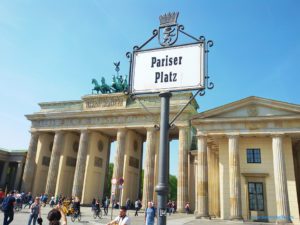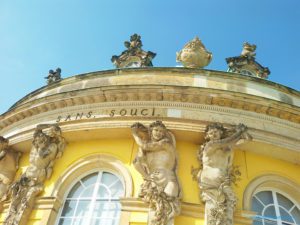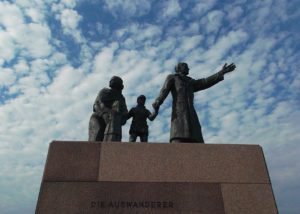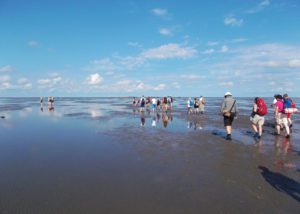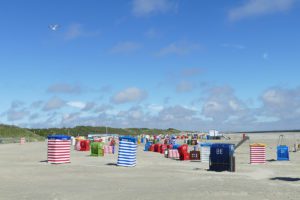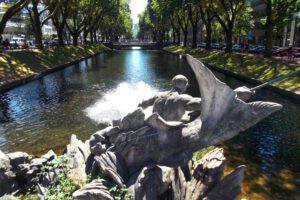A weekend in the German city of Essen: If as a travel blogger I have a mission, it’s to show the world that there is far more to enjoy in Germany than the infamous Oktoberfest. Thus, some time ago, I’ve introduced five of Germany’s most beautiful and exciting islands in my series Island Hopping in Germany. Now, in this post, I’m starting another series, focusing on the Ruhr, a former industrial mining area at the confluence of the rivers Rhine and Ruhr where the city of Essen transformed a Coal Mine into a Unesco World Heritage Site. Yet, there is much more to explore.

Why Essen?
If you don’t live in Germany, chances are you have never heard of a city called Essen before. And although people in Germany know that there is an Essen, they spend their weekends rather on trips to Berlin, Munich, Hamburg, Frankfurt, and Cologne, to mention the top five.
Essen – isn’t that this dull place amidst coal mines? Why should you waste your precious weekend there? Well, you German and international visitors, I tell you why: Because Essen merged from a coal mine to a treasure box full of hidden and unexpected gems, that’s why.
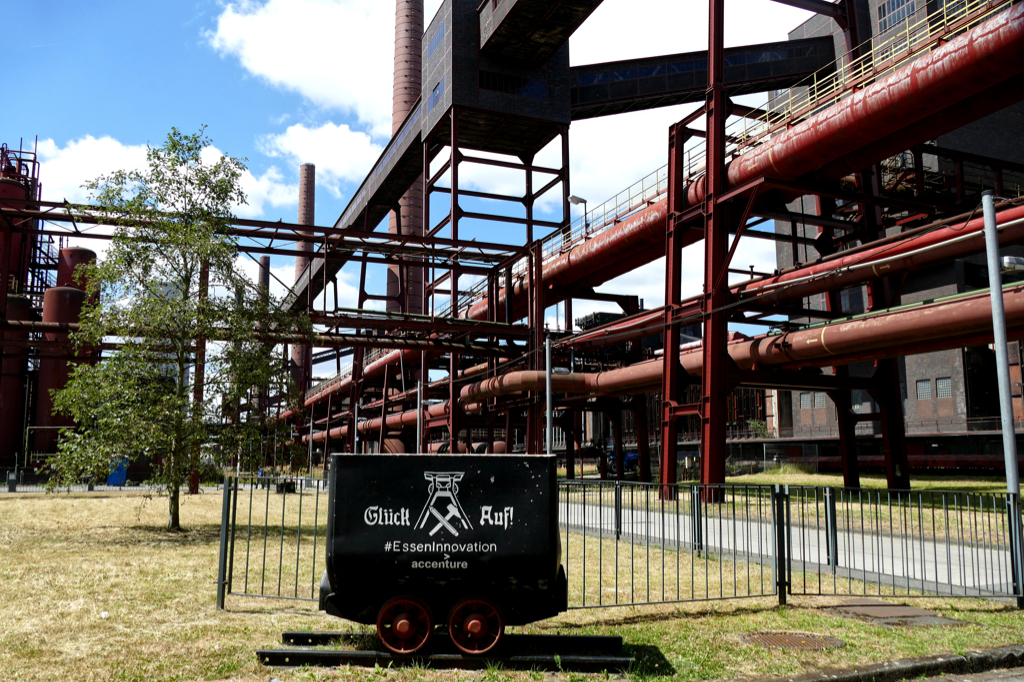
Not only did Essen transform one of the former industrial plants into a landmark that Unesco listed as a World Heritage Site in 2001. No, in addition, Essen was the European Capital of Culture in 2010, and in 2017, the European Commission granted the city the title European Green Capital.
So Much to See
But apart from these major awards, there are some amazing and unique minor treasures like for instance a hospital designed by Austrian wunderkind Friedensreich Hundertwasser. Or the church windows created by no less than the world-famous artist James Rizzi from New York. The rise and fall of the infamous Krupp family can be traced at their former mansion Villa Hügel.
At the greenery Grugapark, you walk between statues by world-renowned sculptors. And if you’re head is spinning from all these glories, you can take a cruise or relax on a beach at lake Baldeney.
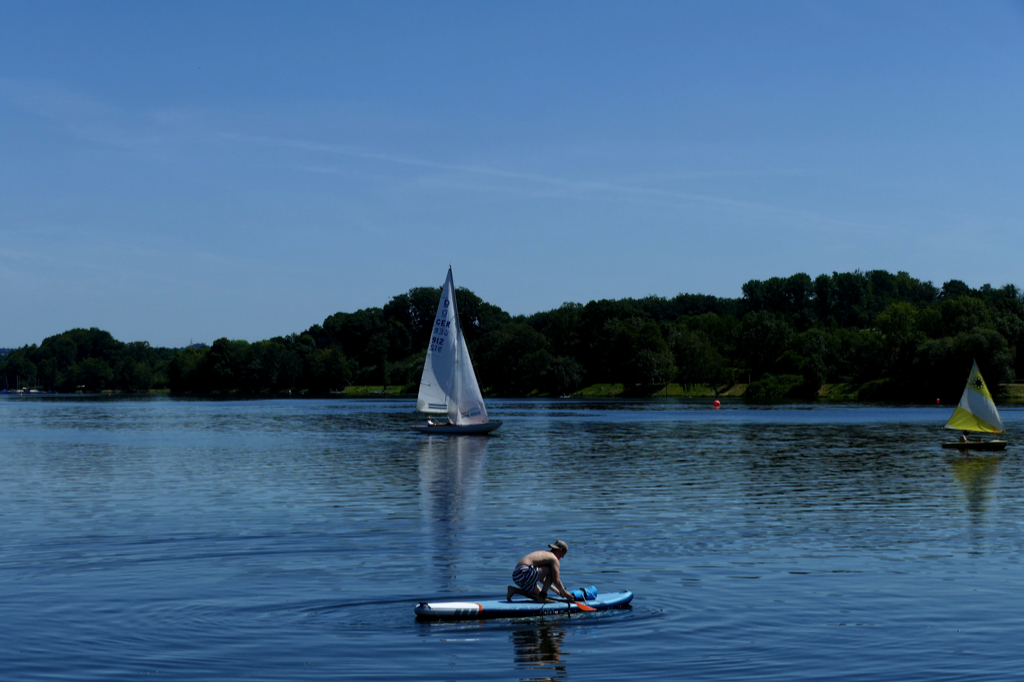
Am I going too fast? Don’t worry, below, I’m describing all those amazing spots – and some more – in detail so that you can pack your bags to spend a wonderful weekend in Essen – the city that went from coal mine to treasure box.
Made from Steel
Essen lies in the center of the Ruhr area and is the fourth-largest city in the Rhine-Ruhr metropolitan region. It goes back to the Frauenstift Essen, founded around 850. Today, the Essen Minster and the oldest surviving full-sculptural figure of Mary, the so-called Golden Madonna, are reminiscent of the city’s medieval glory’n’history.
However, only with industrialization in Europe, Essen became one of the most important centers of the mining industry in Germany. Nevertheless, from the mid-1960s on, the heavy industry suffered a massive decline. Today, monuments of industrial culture bear witness to its glorious past, especially the UNESCO World Heritage Site Zeche Zollverein.

To me, Essen – apart from all its amazing landmarks – has a very real feel to it. I would argue that you learn more about true German life in an unpretentious city like Essen than for instance in a hip hotspot like Berlin or in a wealthy metropolis like Munich.
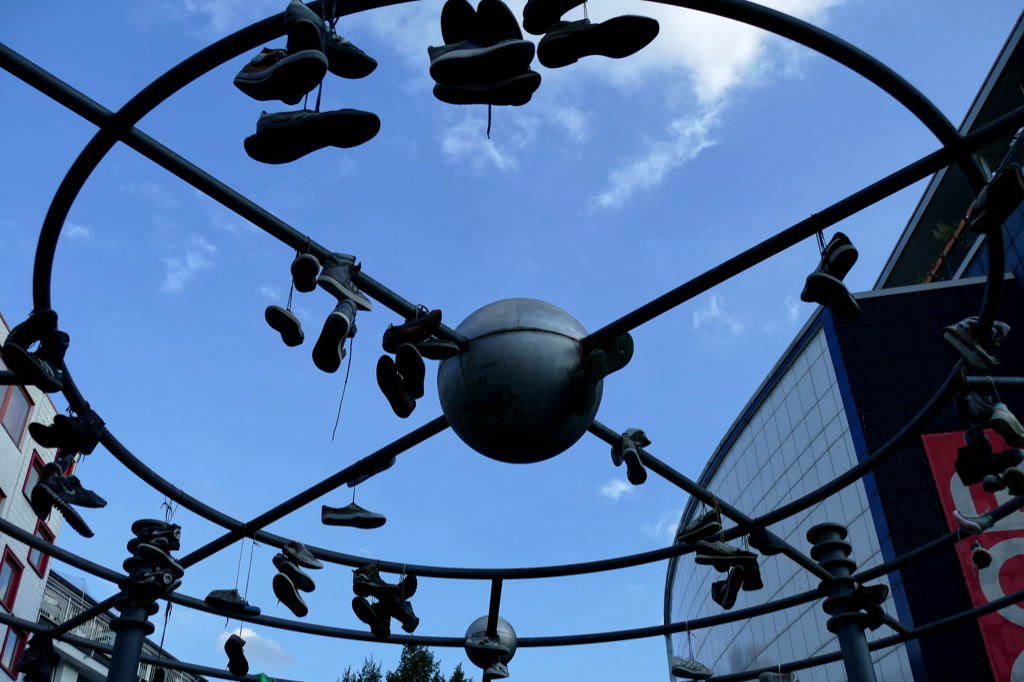
Essen is the real deal – which does not mean that it’s dull or boring. Also, Essen doesn’t equal Essen, obviously. As in any other city, there are very different neighborhoods that developed over the decades and are reflecting the whole variety of Essen’s population.
Downtown Essen
After all, there are living almost 600,000 people in Essen. An incredible 35 percent of these inhabitants are coming from a migratory background from about 140 different countries. Therefore, the social, linguistic, cultural, and religious diversity is an amazing part of everyday life.
As you walk up the Kettwiger and Viehofer Straße from the main station northwards, you get to experience this side of Essen. Between those standard global chain stores is a mind-blowing variety of small shops selling foreign phone cards next to lavishly adorned evening gowns. You get exotic spices’n’sweets at oriental supermarkets and enjoy a shisha at one of the tea houses. Here, people from African countries, the Middle East, and of course Turkey created a little piece of home.
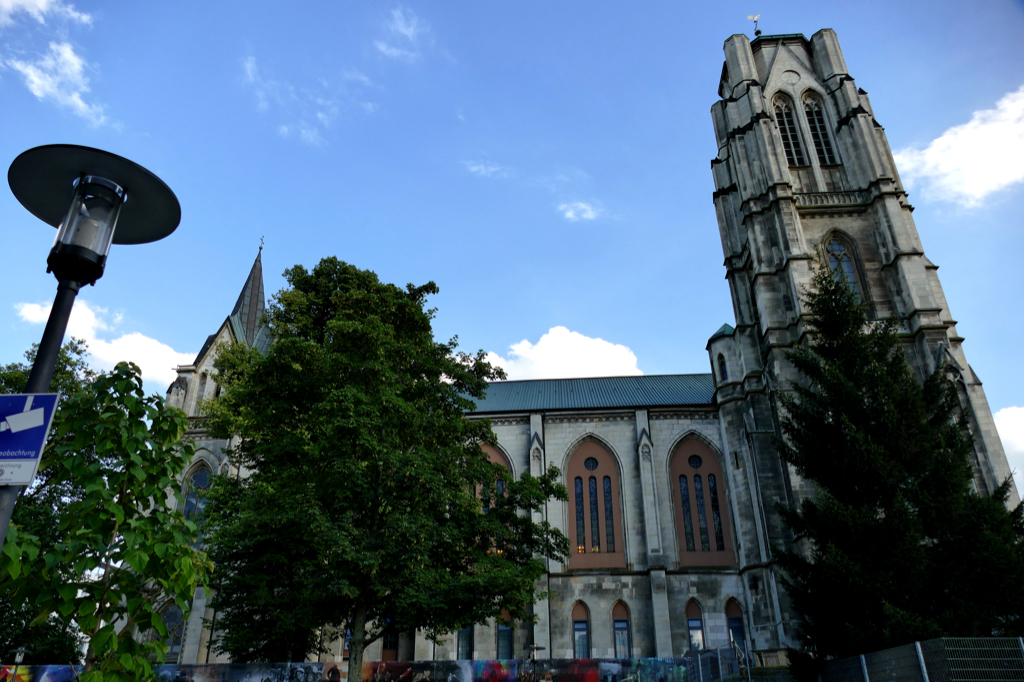
One might think that Turks should be the largest group among Essen’s migrants. But no, actually most of today’s ex-pats come from Poland. As a matter of fact, Poles have the longest history of migration in the Ruhr region. Starting around 1870, agents recruited Poles to move to the Ruhr area as miners. To this date, this is reflected in some popular family names in this region.
Thank God It’s Friday
I get to Essen on an early Friday evening. I drop my bags at the hip Niu hotel and rush out to take advantage of the mellow evening light. The summer sun already lost its power so I have to hurry to take pictures of some of Essen’s most amazing street art – another aspect of the city that’s totally underrated.
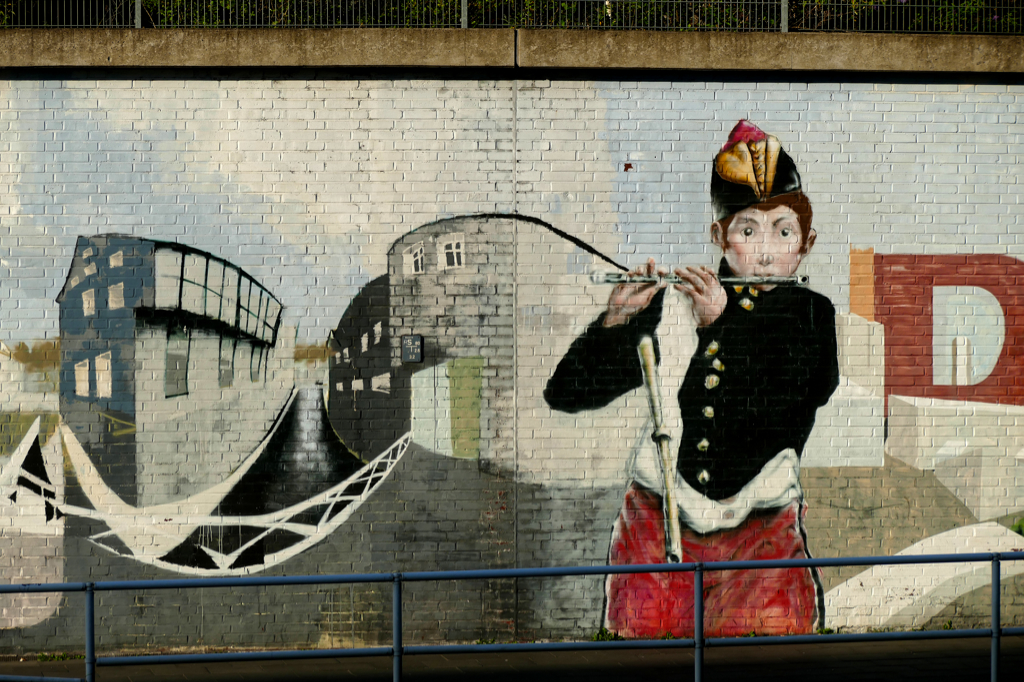
Since I’m already in the vicinity, I decide to wrap it up at the city’s most popular rooftop bar Lil’ Tiger. I’m sitting at one of their little tables, the crowd is rather casual. In a location like this, it would be the somewhat pseudo-rich and wannabe-famous in other cities. But even up in the air, Essen is very much down to earth.
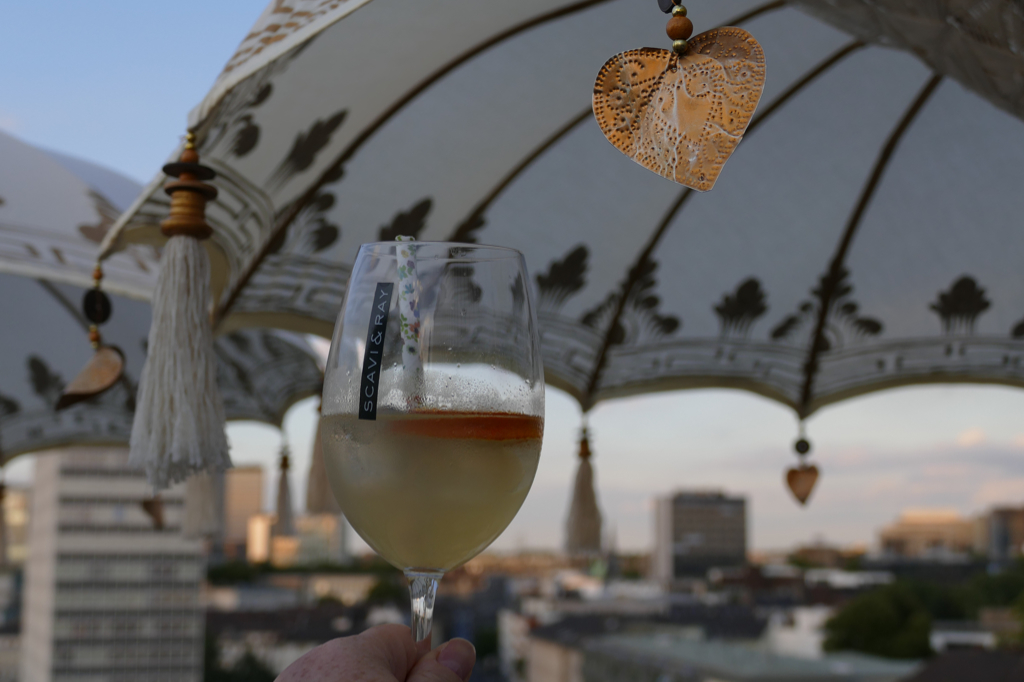
The music is pumping, the super friendly waitress brings me an Asian-infused snack and one of their delicious signature cocktails. I must say, my weekend in Essen couldn’t begin better.
Essen Minster
So let’s begin where it all actually started, namely at the city’s Minster. Around 850, Bishop Altfrid and his siblings founded an abbey. It was an outstanding religious institution for women in the German Empire in the early and high Middle Ages. However, the convent was not a monastery, but a kind of residential and educational center for unmarried daughters and widows of the high nobility. Hence, only the head abbess was obliged to take a vow of chastity.
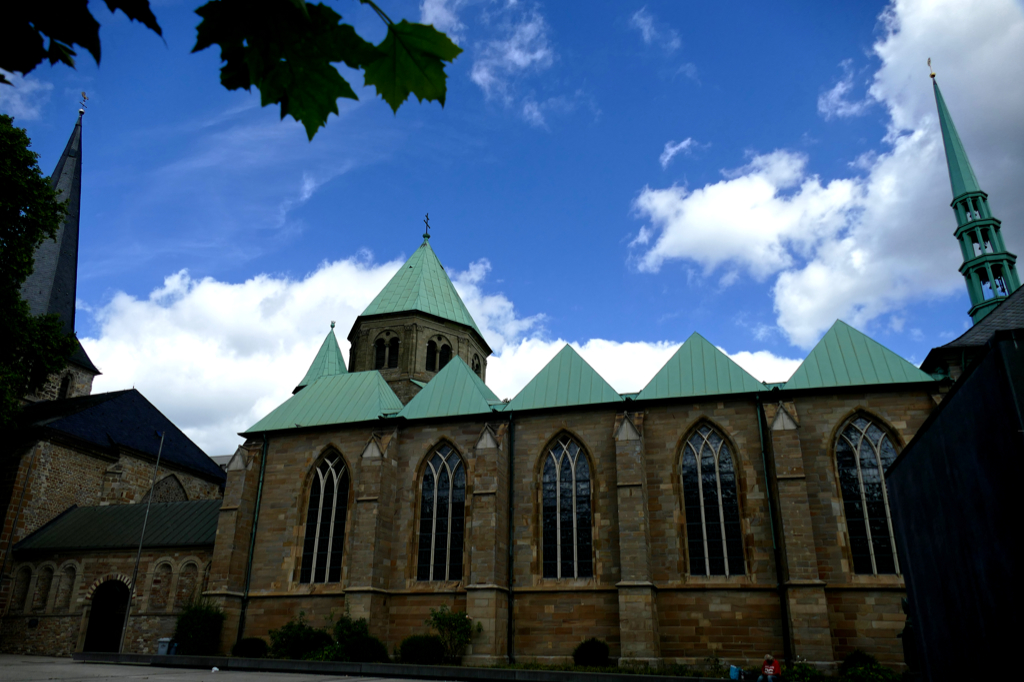
Due to the baroque alteration in the 18th century, the re-Gothic change in the 19th century, and also the destruction during WWII, only a few remains of the earliest furnishings of the church have survived. Its interior is quite simple, however, you’ll find one of the most important medieval works of art there.
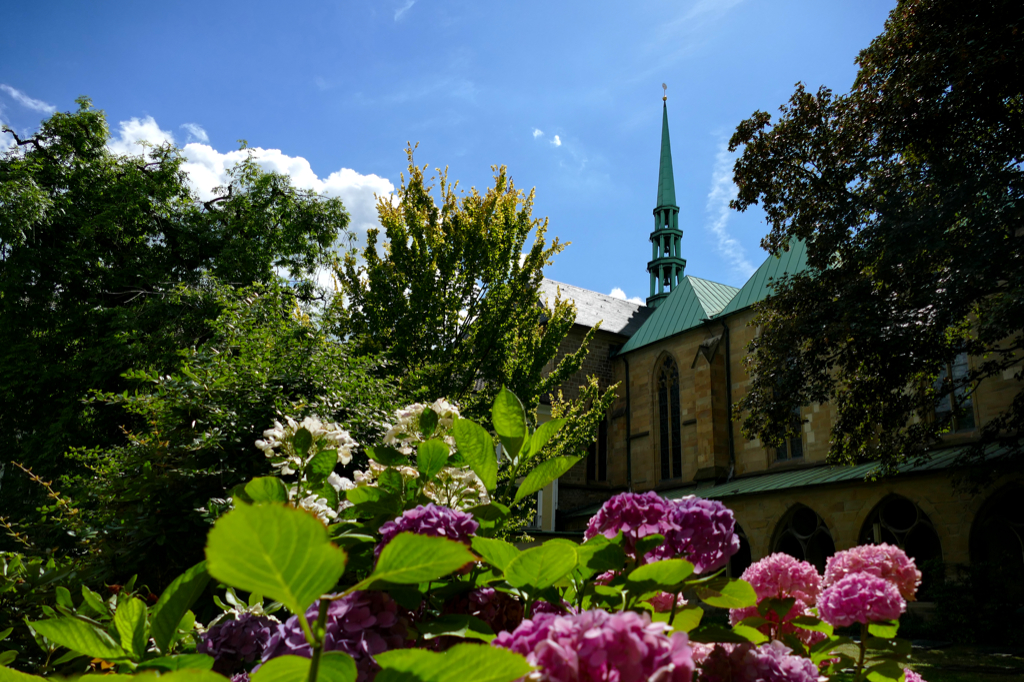
In one corner lives the Golden Madonna. This lady that looks at you with a truly intense glare is the oldest fully sculpted figure of the Virgin Mary in the world. Obviously, she is the patron saint of the Ruhr diocese.
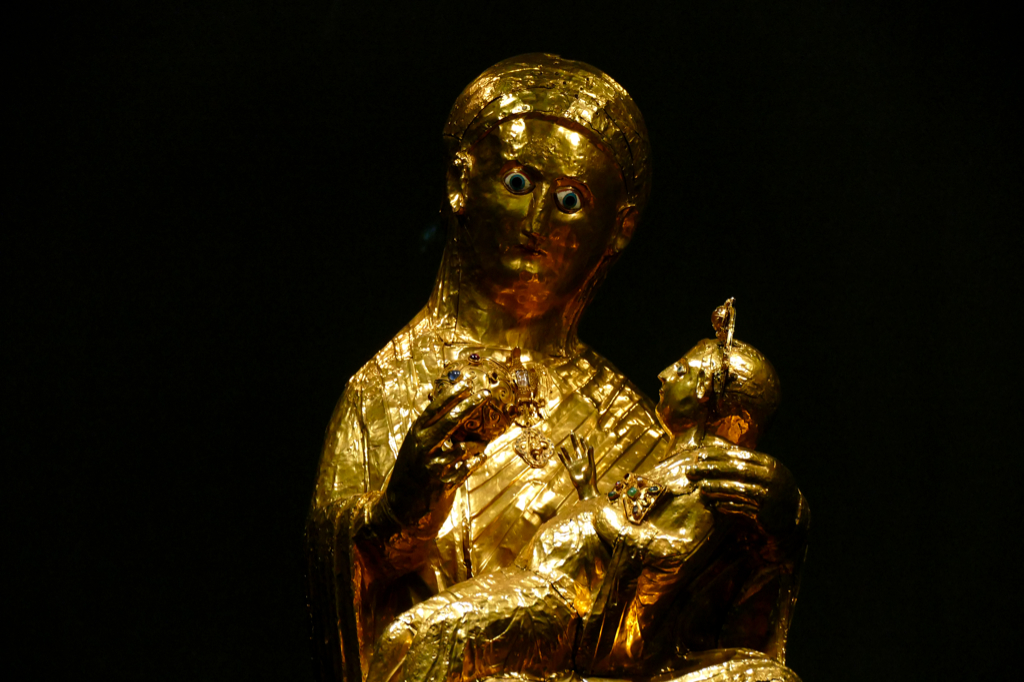
To see the Minster’s other treasure, you can visit the Essen Cathedral Treasury which houses one of the most significant collections of religious artworks in Germany. It is open from Tuesday to Sunday between 11 a. m. and 5 p. m. Don’t worry, you don’t have to pay a fortune to see the treasure as the general entrance fee is only 4 €uros.
Alte Synagoge
East of the Minster complex across the broad road Schützenbahn is Essen’s former synagogue.
At the beginning of the 20th century, Essen’s old synagogue became too small for the growing Jewish population. Therefore, the community commissioned architect Edmund Körner to build a new synagogue in 1911. This stately building represented the acceptance and integration of Jews during Germany’s Second Empire. After all, in terms of volume, it is even larger than the New Synagogue in Berlin.

On the night of November 9th, 1938, the Nazis tried to demolish the building which turned out to be impossible without damaging also the neighboring houses. Nevertheless, the interior of the synagogue was badly vandalized by arson.
However, the building survived WWII without major damage and remains the largest free-standing synagogue building north of the Alps to this date.
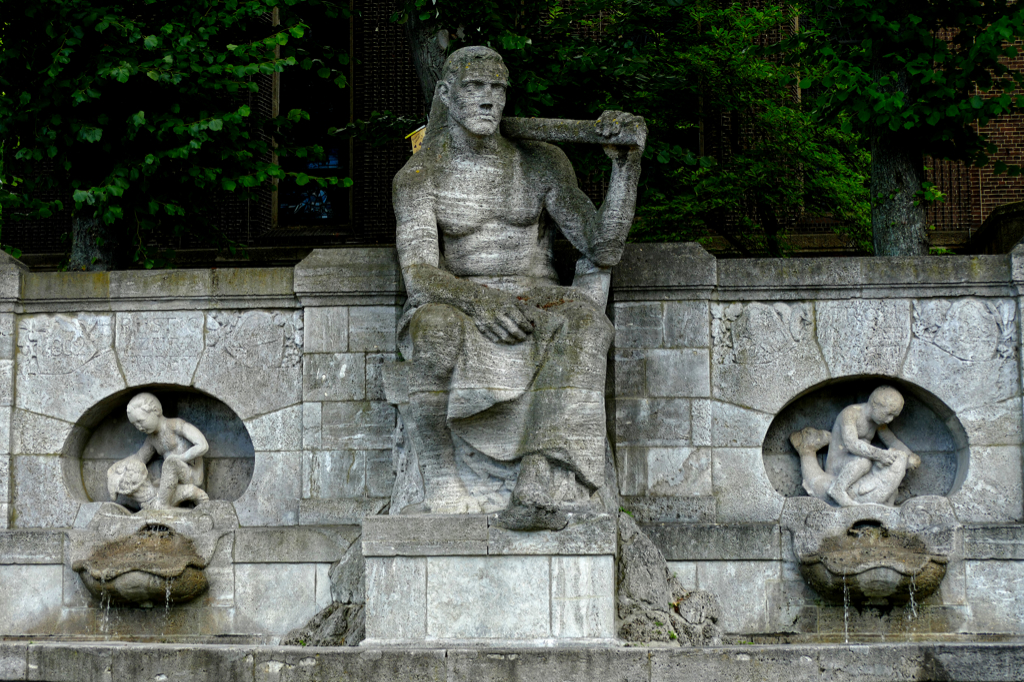
Today, the old synagogue houses Essen’s House of Jewish Culture. There are five different exhibition areas informing about the sources of Jewish traditions, holidays, and the history of the Jewish community in Essen. The exhibition can be visited from Tuesday to Sunday between 10 a. m. and 6 p. m. free of charge. Only if you join the guided tour, you have to pay 3 €uros.
Kreuzeskirche
The Kreuzeskirche is a Protestant church from the late 19th century. After severe damage in WWII, it was rebuilt by 1953.
The church building will probably not blow you away. However, it has a unique feature that you should not miss out on when visiting Essen.
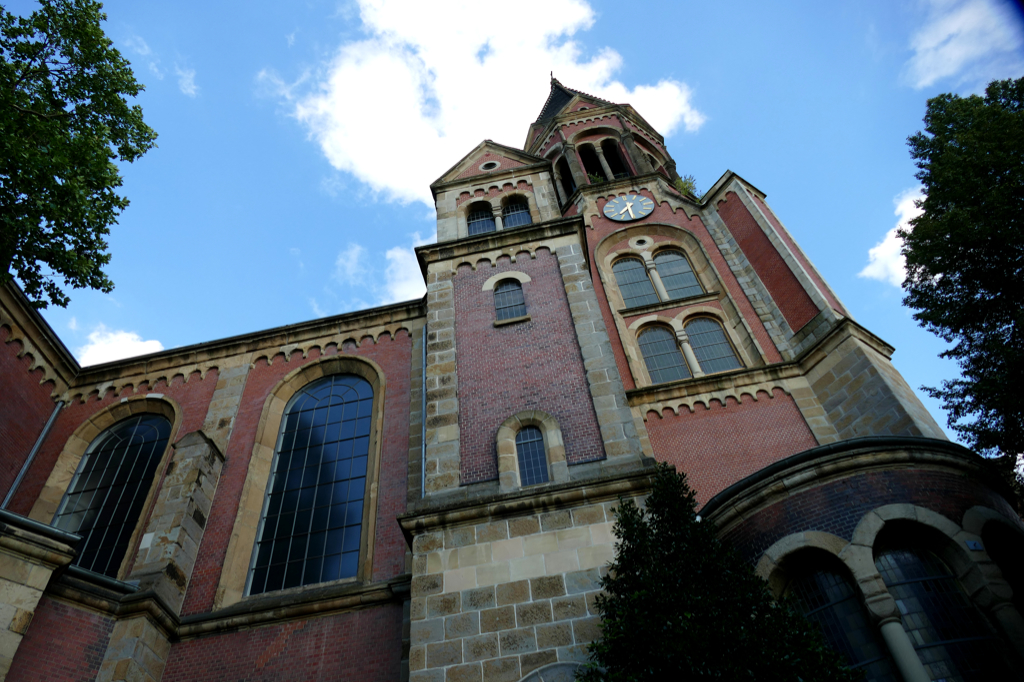
In 2016, two colorful church windows by no less than pop artist James Rizzi were installed. I’ve admired Rizzi’s art for decades – even before I knew who he was.
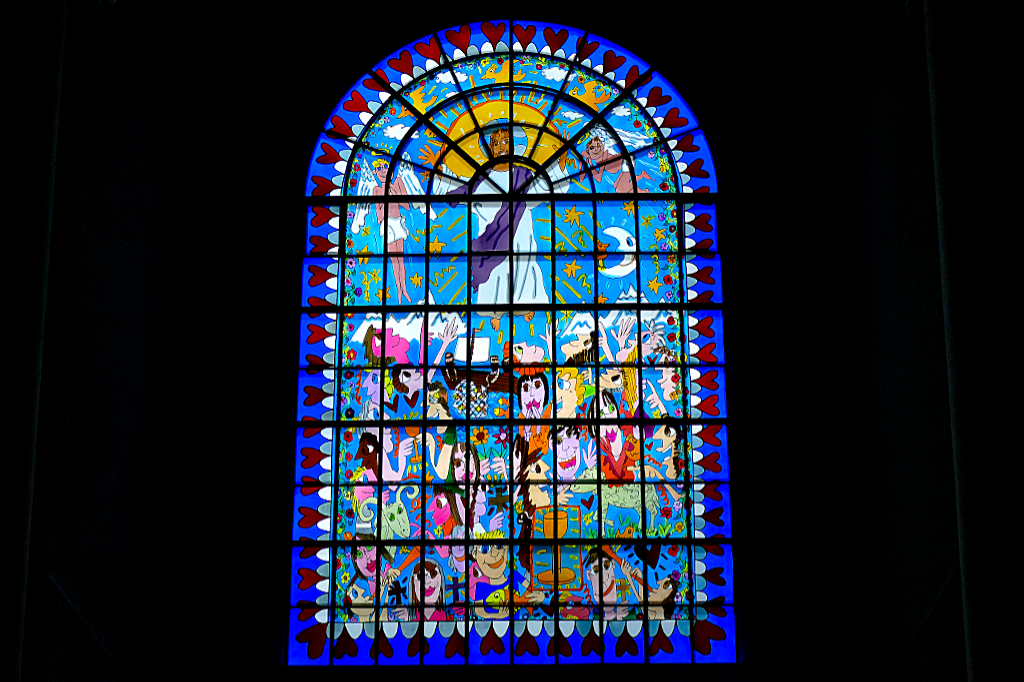
If you’re old enough, you might remember the band Tom Tom Club – and you might remember those large vinyl records that came in cardboard sleeves. Well, I recall staring at the fun, colorful wimmelpictures that illustrated the Tom Tom-Club-covers in awe, amazed by all those quirky details. What I did not know then was that they were painted by a certain James Rizzi from Brooklyn.
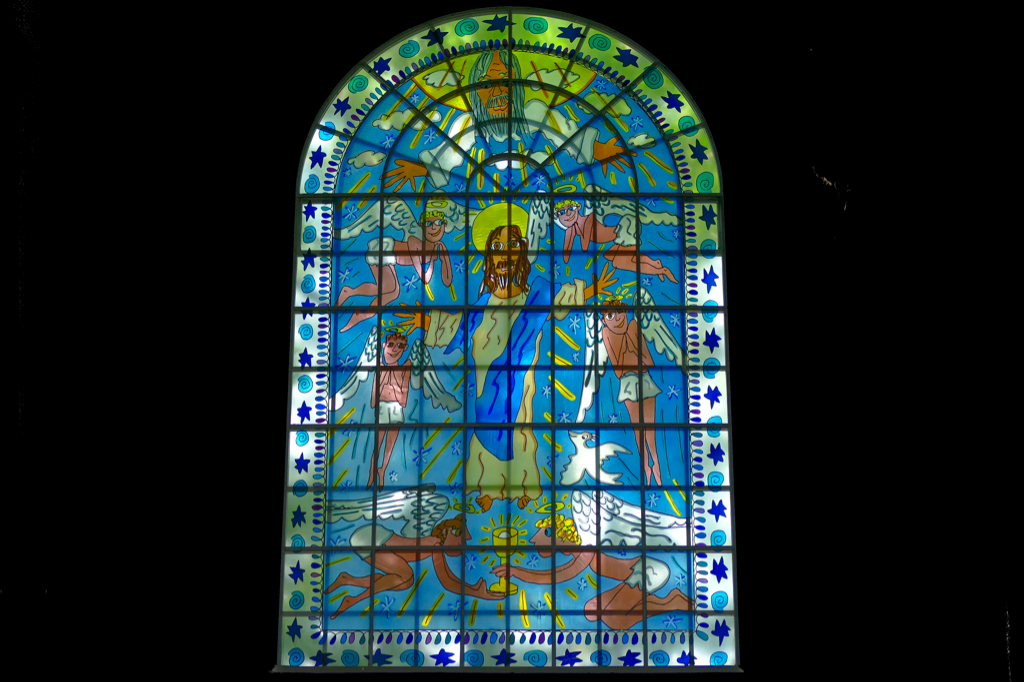
Rizzi was born in 1950 in New York and apart from painting, he also embellished a wide variety of everyday objects like china, sneakers, cars, and even an entire Boeing 757. Sadly, he passed away in 2011. Although he was said to be one of the most popular contemporary Pop Art artists, I have the impression that he was actually more recognized in Germany than in the US.
Howsoever, today, you can enjoy his fun stained glass windows at the Kreuzeskirche for instance during the Sunday service between 11.15 a. m. and noon. Since the church is also used as an event location, you should inquire about their opening times before you go either by phone at +49 – 201 – 248 65 47 or by mail at info@forum-kreuzeskirche.de
Rüttenscheid
First of all, note that this beautiful name is pronounced something like Rew-Ten-Shide. But don’t you worry, I’m explaining all those quirky German letters’n’pronounciations in the language section below.
Now, Rüttenscheid is some kind of a mini-Greenwich Village of Essen. The main artery is Rüttenscheider Straße. Here you’ll find many hip small shops and tons of cafes, pubs, and restaurants. If you’re lucky, you’ll experience one of the annual culture and music festivals like the Rü-Fest or the Rüttenscheider Musiknacht.

On Rüttenscheid’s southern border are some of the city’s most important cultural institutions like the Philharmonie Essen and the famous Museum Folkwang.
Museum Folkwang
I’m a trueborn culture vulture, hence, I’ve visited this art museum already a couple of times on the occasion of some temporary exhibition. But no matter what special exhibit is on, the permanent collection alone is worth the visit anytime.
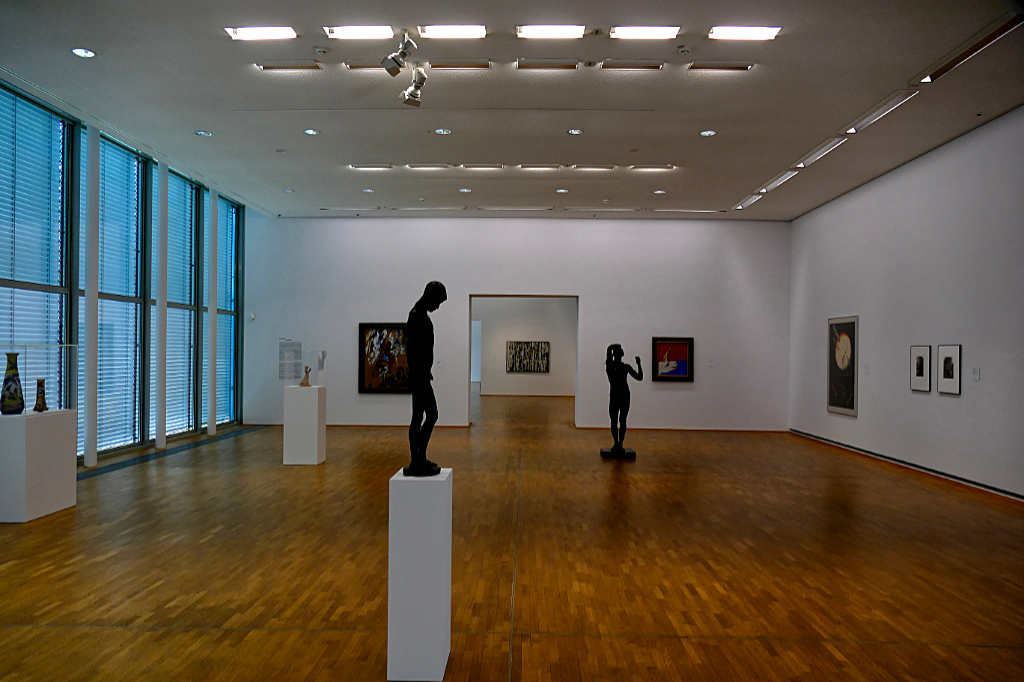
In 1902, the art patron Karl Ernst Osthaus opened an art museum by the name Folkwang in the city of Hagen, located about 40 kilometers east of Essen. For a long time, this art venue played a pioneering role in the field of modern art.
After Osthaus’s death in 1921, his collection was sold to the Folkwang Museum Association in Essen. Since 1922, the Museum Folkwang shows modern art including the art movements Impressionism, Expressionism, Surrealism, and others. Also, they always have inspiring temporary exhibitions.
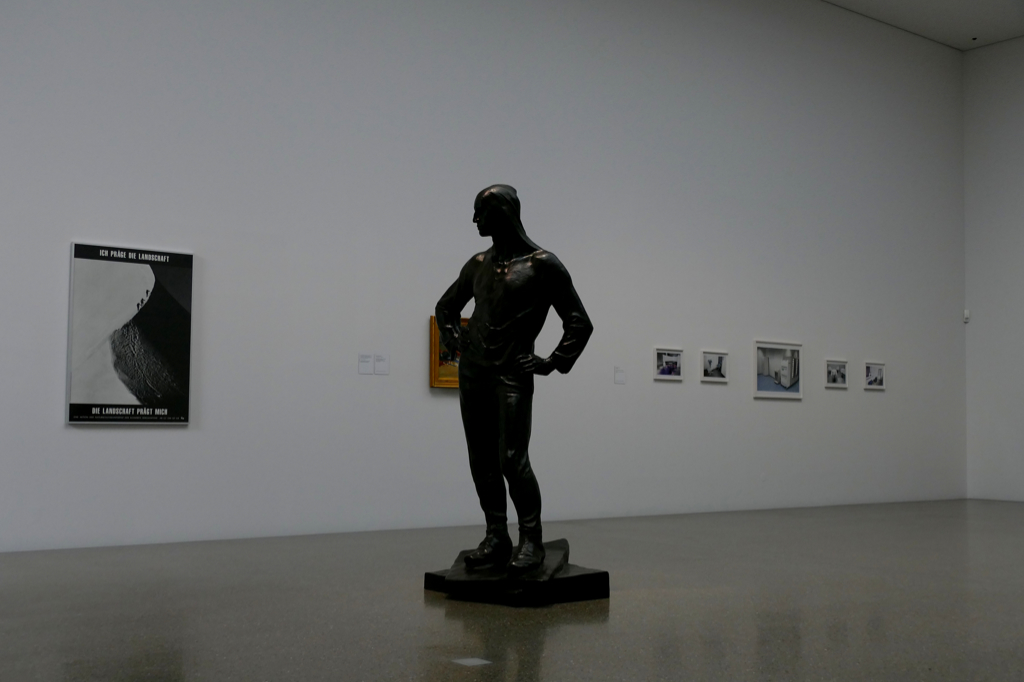
For these special events, you need to buy a ticket. Entrance to the permanent collection, however, is absolutely free.
Where Are You From?
For many years now, German art museums are dealing with the difficult topic of provenance research. They are basically checking where certain paintings come from, who used to own them and how they ended up in their collection. Mostly it’s art that used to belong to Jewish collectors who had to flee Germany during WWII or were murdered by the Nazis. In my post on Argentina, I’ve mentioned that for instance Eva Perón is believed to have kept Nazi treasures taken from wealthy Jewish families.
At the Folkwang, they put charts next to some of the paintings. This way, you can learn whether that specific piece is unburdened, still under investigation, or problematic.
While I know that provenance research has been a big thing when it comes to former Jewish possessions, I saw for the first time that a museum is doing research on art stolen from former colonies.
Since 2021, museum Folkwang has been taking part in a project on art from Benin. In 1897, hence, around the same time that the museum was founded, British troops brutally destroyed the Kingdom of Benin. The royal property was confiscated and sold on the European art market. German museums alone own over 1,000 bronzes from Benin.
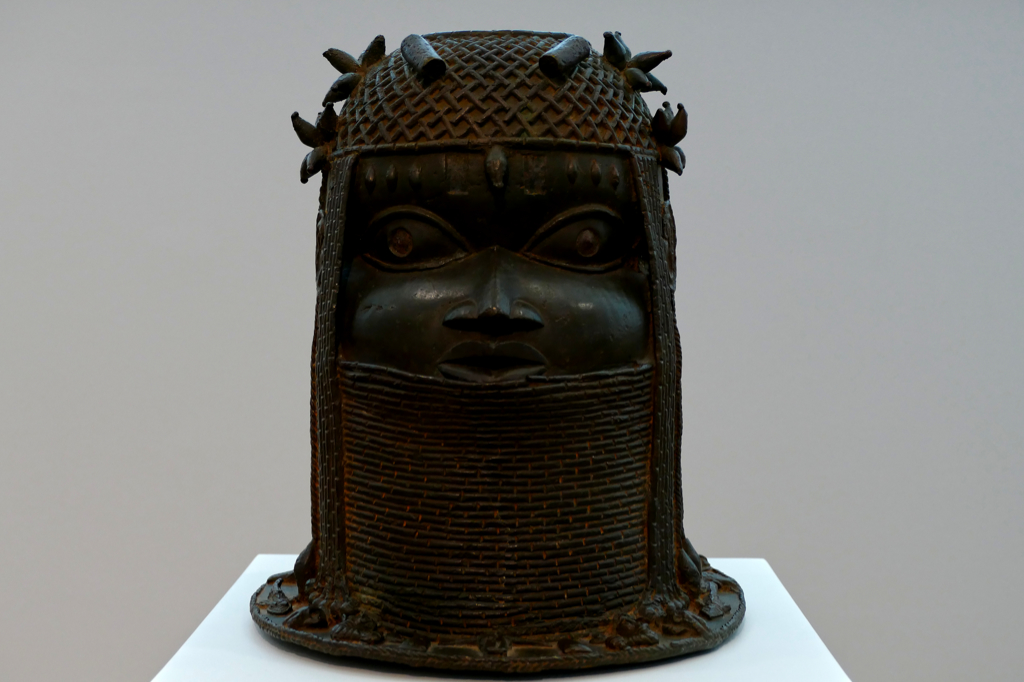
Way to go, Germany! If the British Museum followed this example, hence, did research, and considered restitution, the building would remain empty. However, wouldn’t it be great if the substantial colonializing nations like Britain, France, the Netherlands, and Spain faced their colonial past in an apologetic manner? I personally think that’s overdue.
In Essen, however, the EXILE association offers also city tours on the subject of colonialism.
The Wheels of Industry
As I mentioned already above, the Ruhr area gained basically worldwide significance through the coal and steel industry.
In 1804, there were already 229 collieries in the Ruhr area. Eventually, mining even increased with the introduction of steam power for dewatering. Therefore, in the middle of the 19th century, the capacities of the mines were no longer sufficient to cover the coal requirements of the fast industrialization. The development of a rail system during the industrial revolution improved the infrastructure of the Ruhr mining industry. At the same time, it increased the demand for coal and steel.
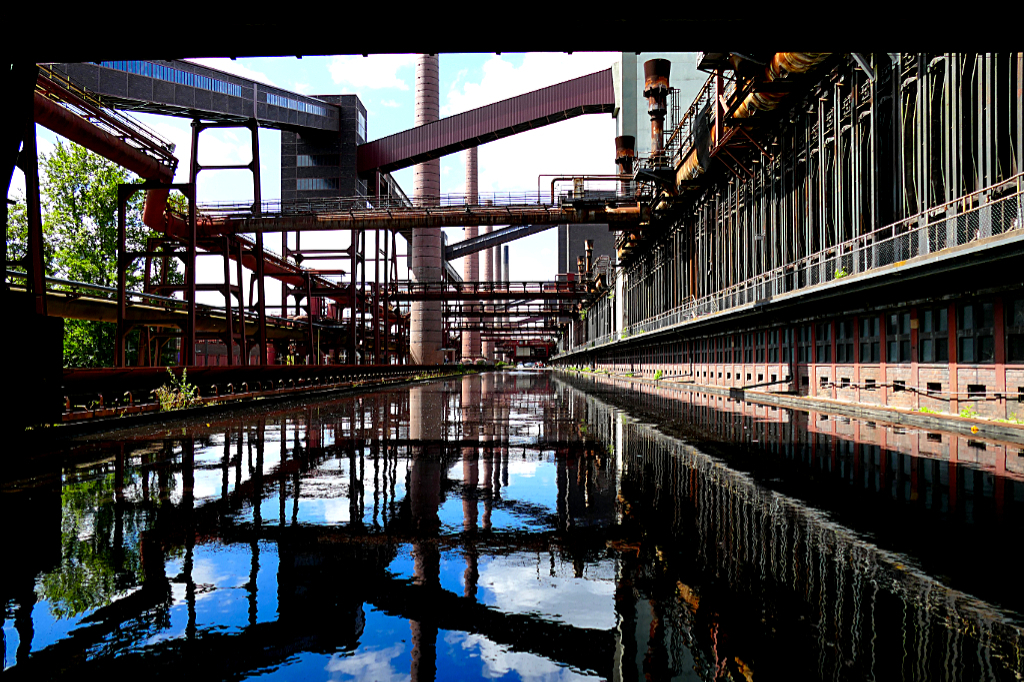
A milestone were the first underground shafts which were created in addition to existing tunnel pits in order to get to the deeper seams. Obviously, this expansion required an increasing number of workers in the mining industry. Due to the lack of qualified local miners, agents were sent to Poland to recruit workers in the mid-19th century. Those first working migrants had to live in tents. However, the collieries soon had to improve housing and living conditions by establishing workers’ settlements. This way, they were able to reduce fluctuation and tie their workers to their mines.
Several collieries were built near Essen’s old town. The most significant and at the same time aesthetically pleasing one was the Zeche Zollverein.
Zeche Zollverein
“When they spotted one of the workers in this part of the colliery he was fined half of his monthly income”, explains Rudi. He knows everything about coal and mining and the Ruhr area. While still working in the industry, he’s guiding groups through the Zeche Zollverein on weekends.
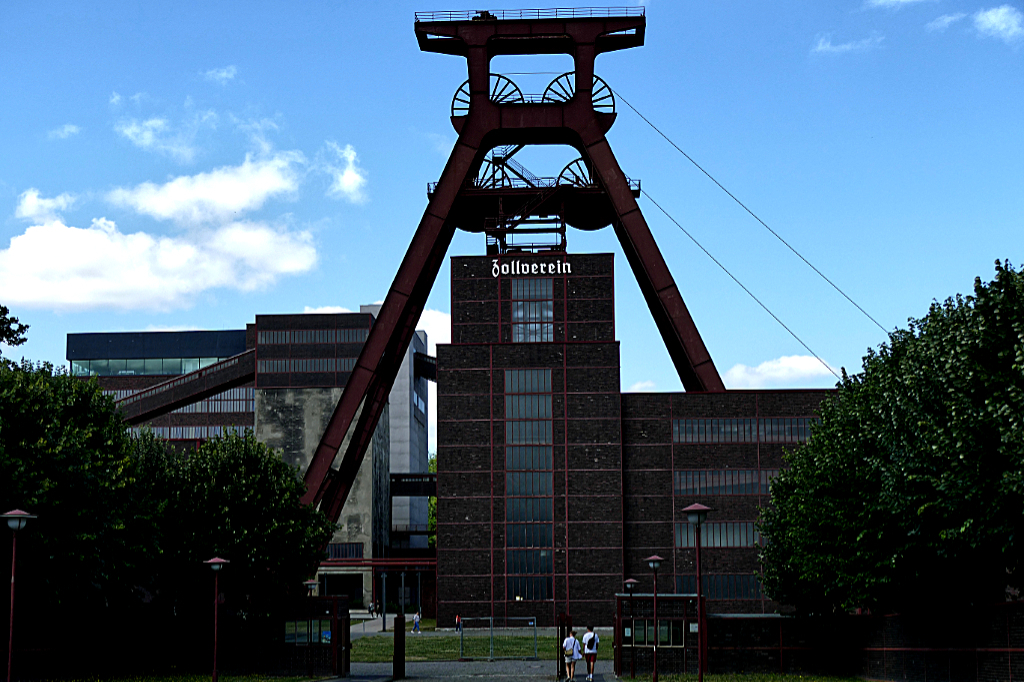
Where we stand now, right in front of the iconic shaft XII, was the representative entrance for official guests and business partners. The have-nots had to work in the heat and dirt underground. Rudi not only explains how coal is formed in the depth of the soil.
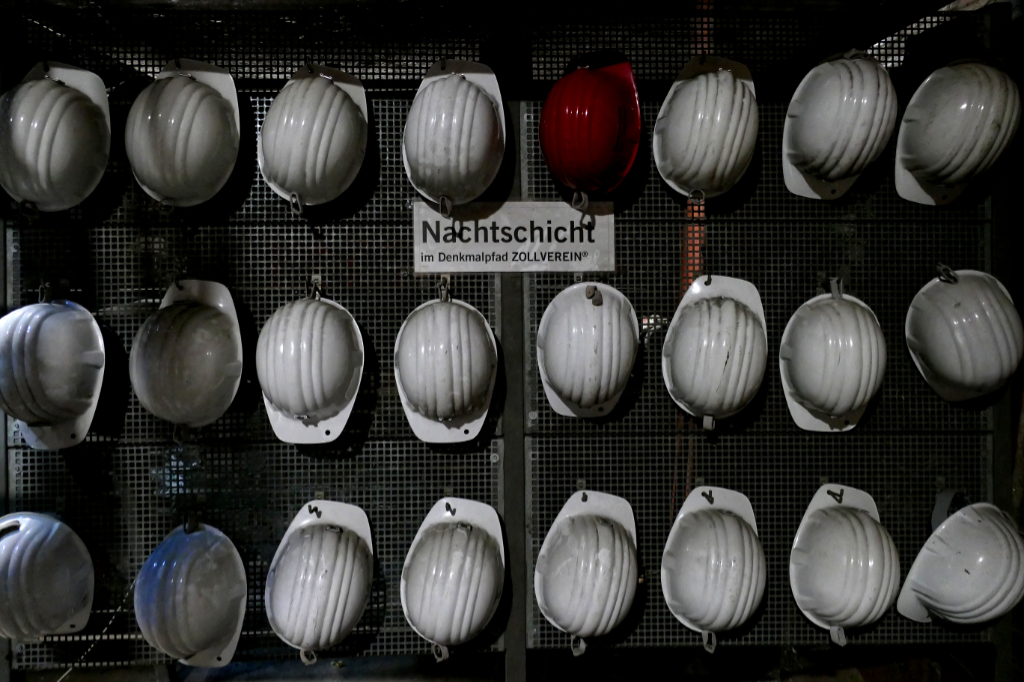
He also graphically sketches what life was like back then in the 19th century when few got incredibly rich while most of the population had to work unimaginably hard to put bread on the table.
Today, all this is history since the Zollverein colliery closed in 1986. It was the last one of about 290 collieries around Essen, once the largest mining town in all of Europe.
Form Follows Function
As the entrepreneur and industrial pioneer Franz Haniel opened the first shaft north of Essen in 1847, German industrial and economic history began. While 13,000 tons of coal were mined in the first year of hard coal mining, by 1890 it was already one million tons.
But efficiency alone was not good enough for Haniel. He wanted beauty. Therefore, he commissioned the young architects Fritz Schupp and Martin Kremmer to design the Shaft XII complex. Since the architects worked closely with engineers, they were able to create an aesthetically pleasing and technically sophisticated industrial masterpiece.
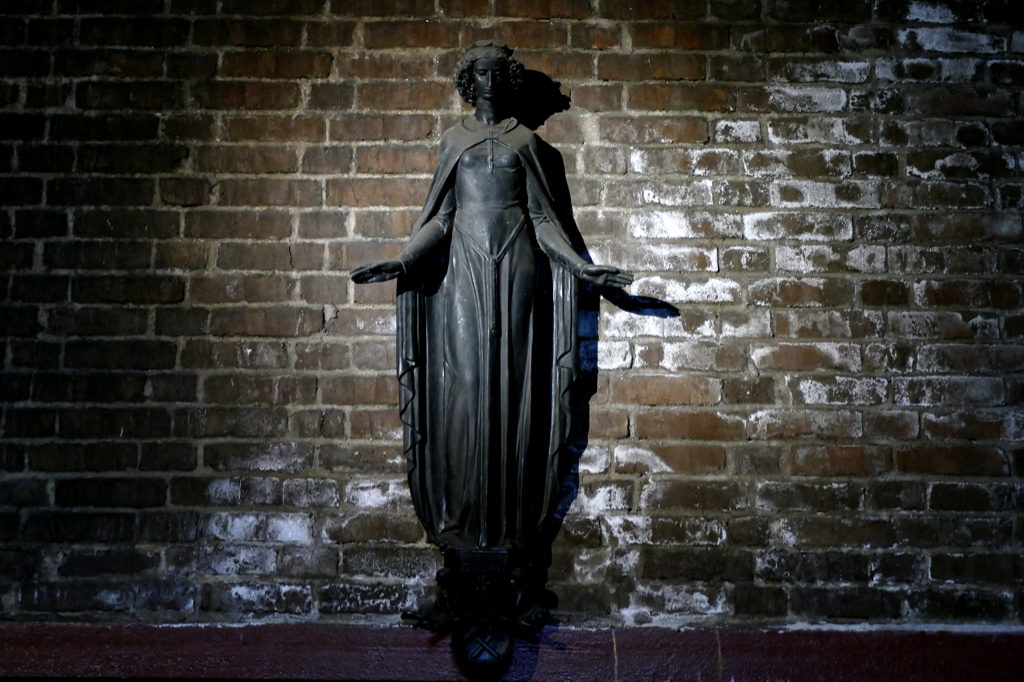
The Eiffel Tower of the Ruhr Area and the Cathedral of Industrial Culture are just two of the many praising titles for this unique industrial monument.
It is an exquisite example of Bauhaus architecture in an industrial context. Each lamp, every door handle, or banister is aesthetically elaborated and makes the Zollverein colliery a work of art. At the same time, it represents the economic and social history of coal and steel in the era of industrialization in an exemplary manner. As a result, this colliery has been listed as a UNESCO World Heritage Site in 2001.
From Plod to Pleasure
After its listing as a UNESCO World Heritage Site, Dutch architect Rem Koolhaas remodeled the site into an amazing place for leisure, culture, and business. On one square kilometer, which corresponds to an area of 100 large soccer fields, the old structures are preserved and offices, galleries, and cafés are harmonically integrated.
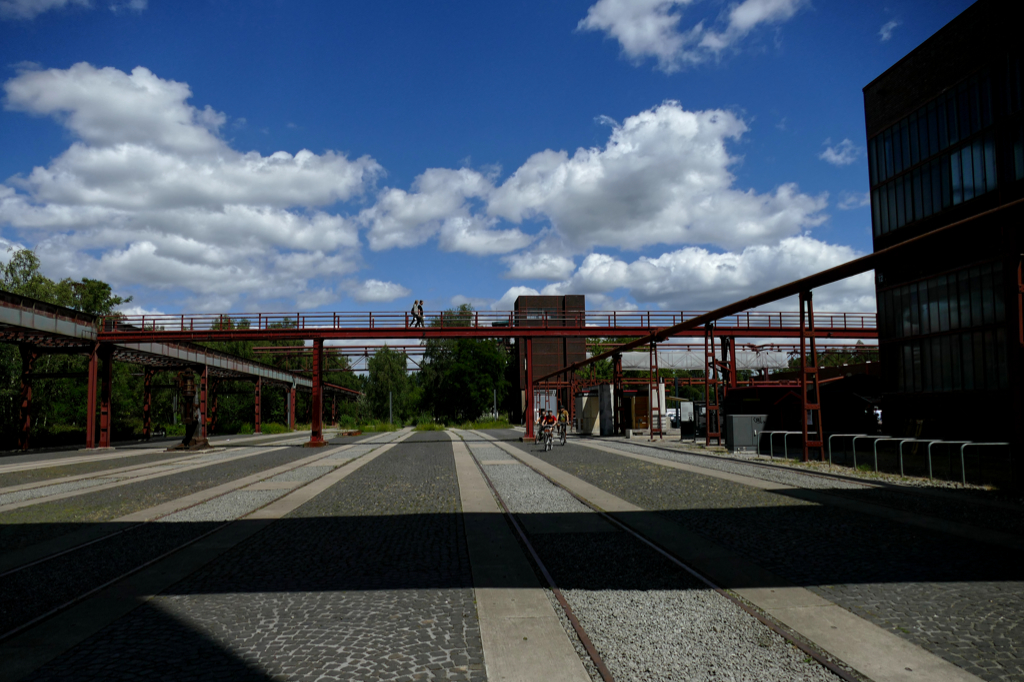
The main building houses a permanent exhibition as well as temporary displays. On 24 floors, you get information about coal mining and related topics. Obviously, the site can – and should – be visited on at least one of the themed tours. This way, you’ll truly appreciate the meaning and value of this totally unique place.
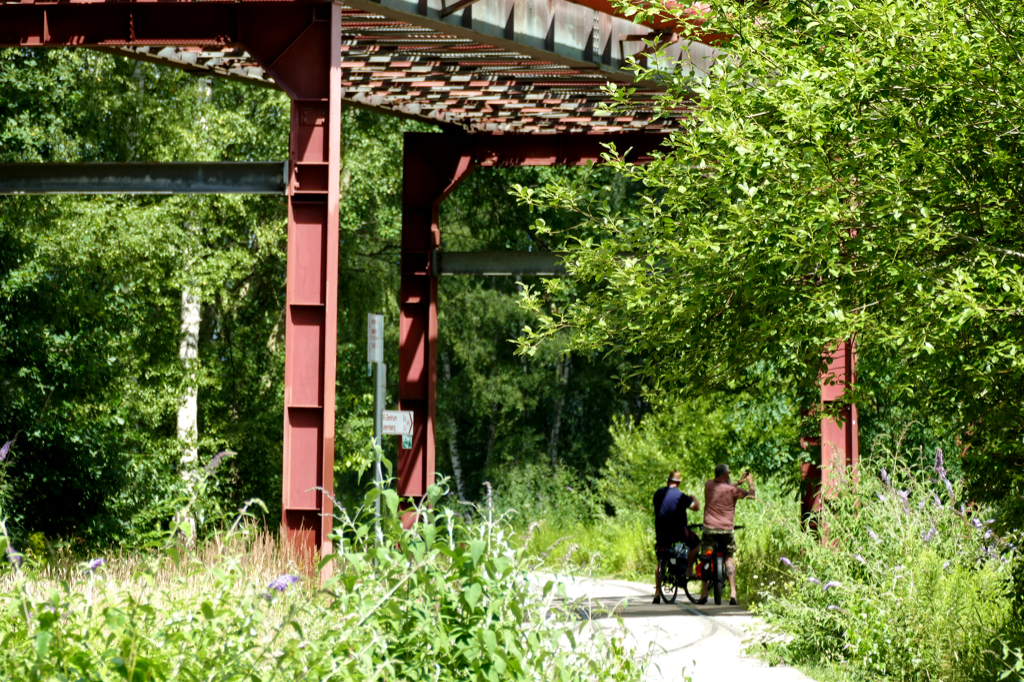
Apart from the main area around the iconic shaft XII, you can walk or cycle on paved trails. There is something to explore at every turn’n’corner.
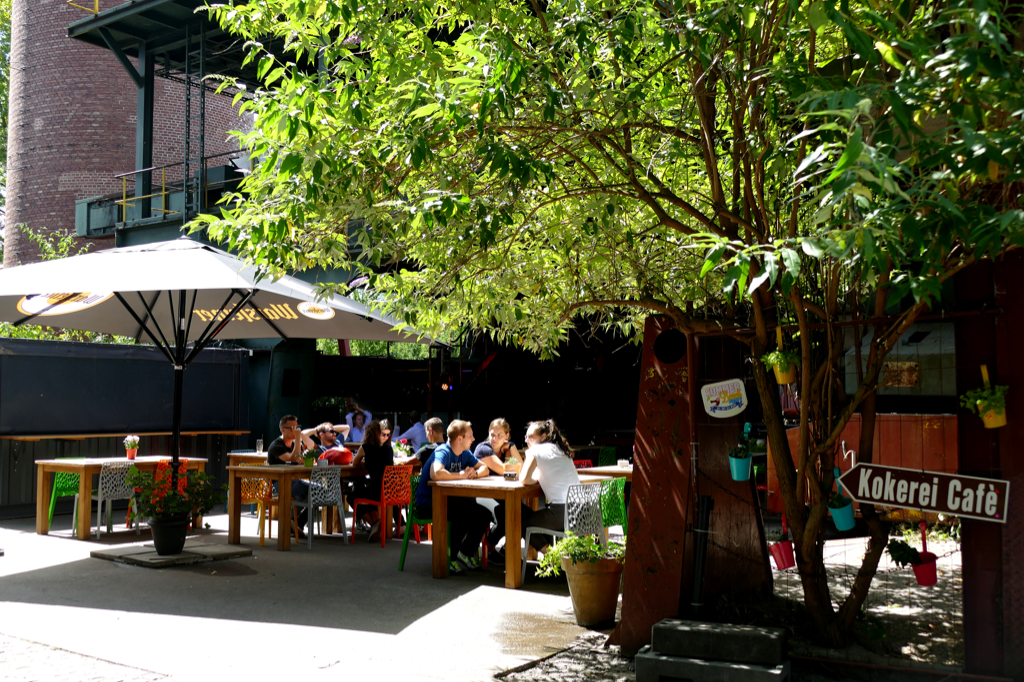
Especially the area around the former cokery was remodeled really nicely. Here, they even transformed an industrial container into a swimming pool so that you can take a refreshing dip. Right next to it, you enjoy snacks in a hip setting at the Kokerei Café.
The Palace of Projects
Once an art addict, always an art addict. Consequently, one of my absolute favorite parts is an exhibition many visitors don’t know about. Since the Palace of Projects is hidden all the way back in the cokery’s backmost corner, I’m afraid it will remain a hidden gem for long.
I found the Palace of Projects by pure incident a couple of years ago and it has been one of my favorite art installations of all time. It was created by Ilya Kabakov and his wife Emilia, two artists known for their immersive installation.
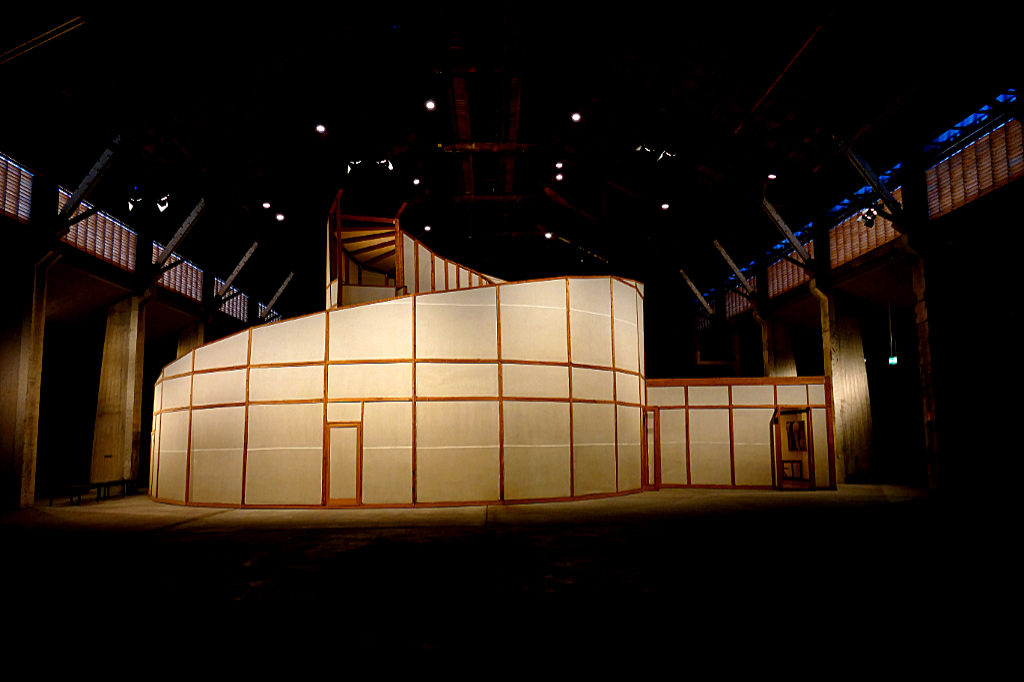
In a nautilus-shaped wooden structure is an exhibit of more than 60 unique projects. They present very different ideas and inventions for improving one’s personal life as well as the world. As a visitor, you walk past these sometimes sentimental, sometimes hilarious but always ingenious projects. If you like, you can sit down at small tables where you can read about the inventor and the idea behind the object.
Now, to appreciate the ingenuity of this immersive piece of art, you have to understand, that Emilia and Ilya Kabakov invented and constructed the entire thing. Will say, they created fictional Soviet citizens including a short vita. By the way, to really grasp some of the ideas in their depths, it’s good to have some context on what life was like in the former Soviet Union.
Then, the Kabakovs let those imaginary people develop utopian ideas and stories. Finally, they introduce those projects in maquettes, paintings, and writings.
Red Dot Design Museum
Another permanent exhibition on the premises is at the former boiler house. British architect Norman Foster converted this industrial site into the Red Dot Design Museum in 1997.
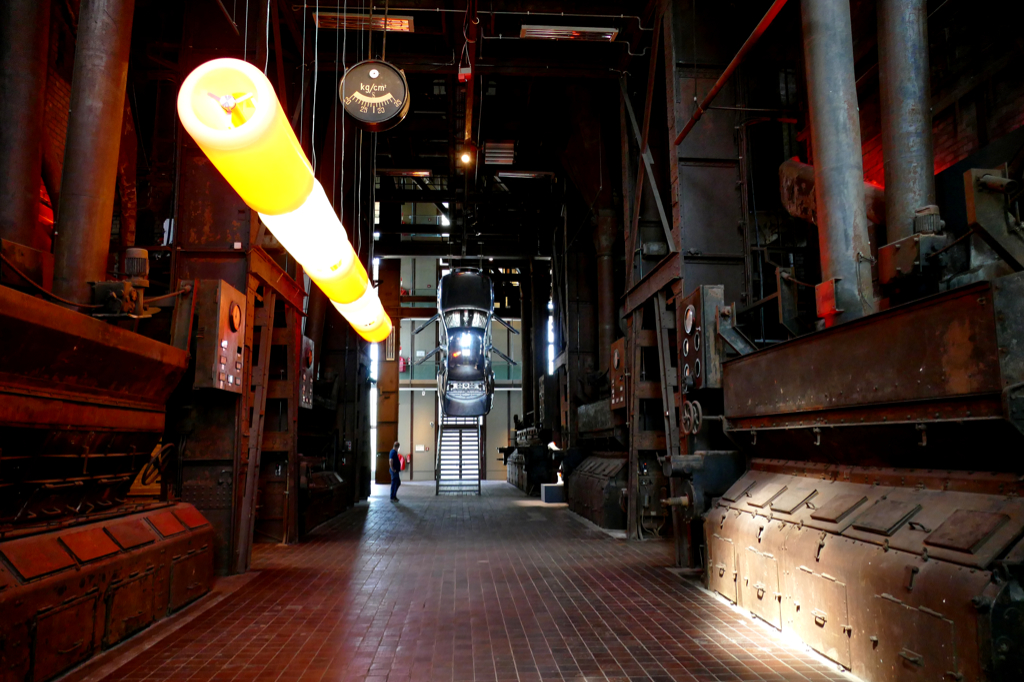
Red Dot award-winning products from tiny smartphones to a car and even a gyrocopter are presented on four floors.
Yes, exploring the Zeche Zollverein can get tiring after a couple of hours. However, I urge you to make at least a little time for this outstanding exhibition, it’s really worth the effort.
Plan Your Visit
The Zeche Zollverein is huge and there is so much to do and to see. Therefore, I’d recommend sparing an entire day for your visit. The mix of nature, culture, information, and leisure will definitely keep you busy from morning till dusk.
Bus #170 takes you from the main station to the Zeche Zollverein in less than half an hour.
Walking around the premises is possible around the clock and free of charge.
The visitors’ center and the affiliated galleries are open every day from 10 a. m. to 6 p. m. A general ticket for the permanent exhibition sets you back 8 €uros, for the different temporary shows 3 respectively 7 €uros. For kids under the age of 17, the visit is free.
Differently-themed guided walking tours cost 10 €uros each. To explore the entire site on a guided train ride, you’ll have to pay 11 €uros.
Note that you’ll get discounted or even free tickets with the tourist cards that I’m introducing in the Deals and Discounts section below.
The Red Dot Desing Museum opens only at 11 a. m. and closes at 6 p. m. A general ticket costs 9 €uros. On Fridays, you pay what you wish.
The Palace of Projects is only open from Friday to Sunday between 11 a. m. and 5 p. m. and the visit costs 4 €uros.
For further information and to book your tickets in advance, just go to their website.
My Tip:
My most important tip is to dress comfortably and to wear comfortable, sturdy shoes. It won’t hurt – literally – if you even opt for hiking boots. Don’t forget that you walk around an old industrial plant. Trails are uneven, there is gravel, there are rails – it’s basically an obstacle course. So, be smart, not vain, and dress sensibly.
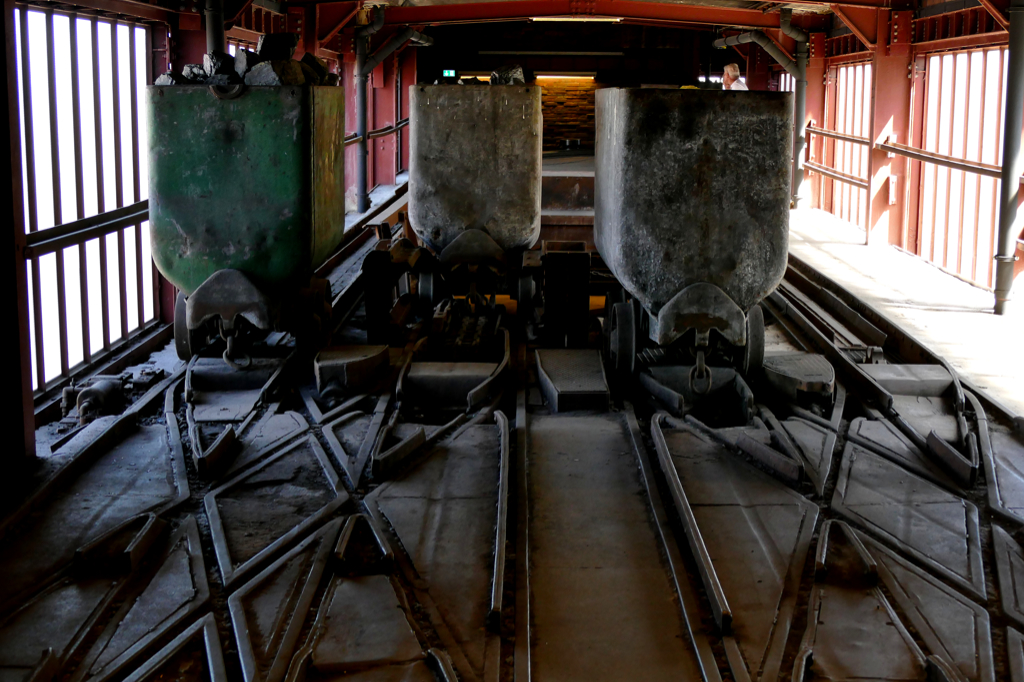
My second tip is actually optional since there are two snack bars as well as a restaurant on the premises. The reason you might want to bring at least some drinking water with you is that especially on weekends and holidays, queues can get really annoyingly long.
However, you don’t have to schlepp that big water bottle all the way from the city center. As you get off at the bus stop Zollverein, there is a supermarket right across the street. Here you can stock up on drinks’n’snacks.
The Krupp Family
Once we touch on the topic of Essen’s steel industry, we cannot avoid talking a bit about the Krupp family. I’m afraid that for many people around the globe, the name Krupp will ring a very dark-sounding bell due to the company’s involvement in two world wars.
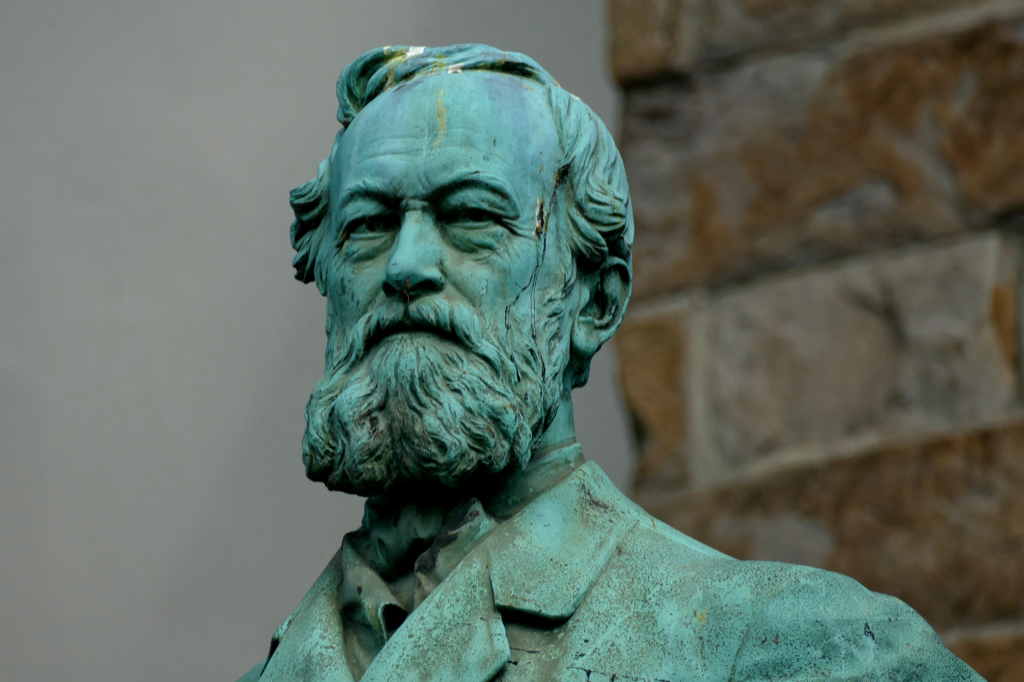
However, the Krupp family came originally from the Netherlands and settled in the Ruhr area in the 16th century. In 1811, Friedrich Krupp founded the cast steel factory. The need for workers led to a significant increase in Essen’s population. Yet, the outstanding expansion of the company began only in 1846 when Alfred Krupp succeeded in manufacturing seamless railway wheels. The factory facilities to the west of the city center were ten times the size of the old town.
Blood Money
The Krupp family maintained business contacts with the German government. Yes, their main trade was the railway. Nevertheless, the weapons they manufactured destroyed lives on European battlefields as well as in non-European countries from 1866 to the end of WWII in 1945.
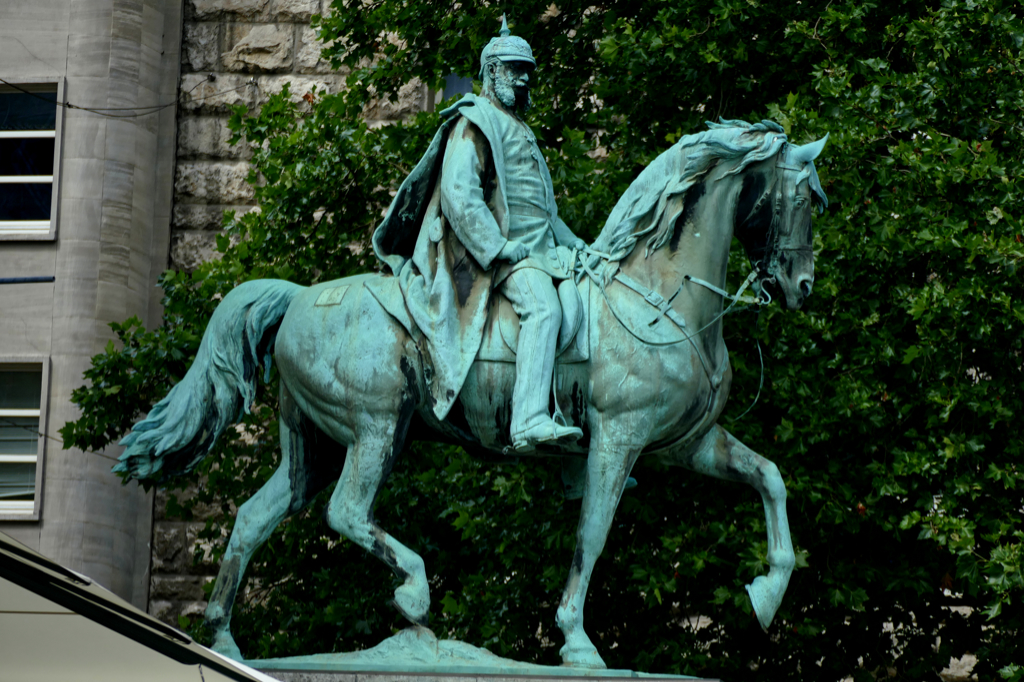
Alfred Krupp’s great-grandson Alfried Krupp von Bohlen und Halbach was the eldest of eight siblings. He came from the Krupp family on his mother’s side and from the aristocratic von Bohlen und Halbach family on his father’s side. He had been a supporting member of the Nazis even before they came into power. Obviously, he remained a passionate Nazi and profited ruthlessly from the rogue regime.
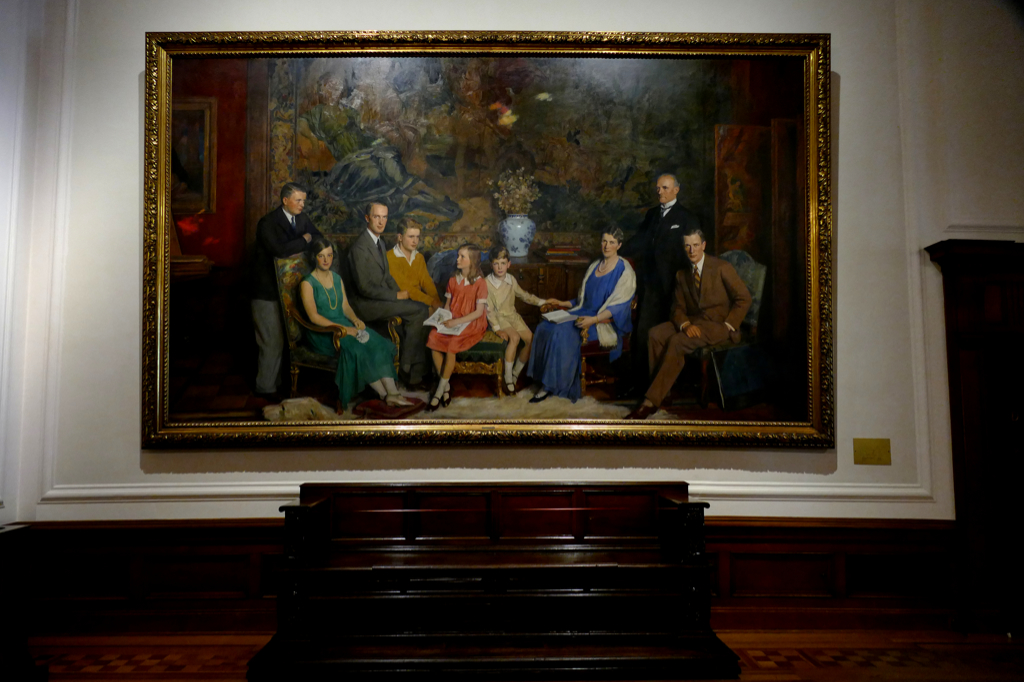
After the war, Alfried Krupp von Bohlen und Halbach was arrested by American troops in the Villa Hügel in 1945. All of his property was confiscated. The American prosecutors filed a lawsuit against Krupp von Bohlen und Halbach and eleven managers of his company in 1947. The following year, he was sentenced to twelve years in prison and confiscation of all his assets for so-called slave labor of forced laborers as well as for plundering of assets in occupied countries.
After the death of Alfried Krupp von Bohlen und Halbach in 1967, his assets were transferred to the non-profit Alfried Krupp von Bohlen und Halbach Foundation. His only son Arndt von Bohlen und Halbach had renounced his inheritance.
My Two Cents
I don’t want to be a Debbie Downer, but I felt there was far too little info on the dark side of the steel industry in general and the Krupp company in particular. After all, they exploited workers through very hard physical work. They profited from horrific wars and enslaved war prisoners as well as civilians from the occupied countries. Like any industrialist in the 19th and 20th centuries, they built their wealth on the blood’n’bones of the less fortunate. That makes it impossible for me to admire this bunch and the wealth they accumulated.
Villa Hügel
Alfred Krupp commissioned the so-called Villa Hügel in Essen’s Bredeney district as the family’s residence in 1870. The castle-like villa has 269 rooms. The living space spreads over incredible 8,100 square meters. May I remind you that the miners’ families used to live with five people on 36 square meters.
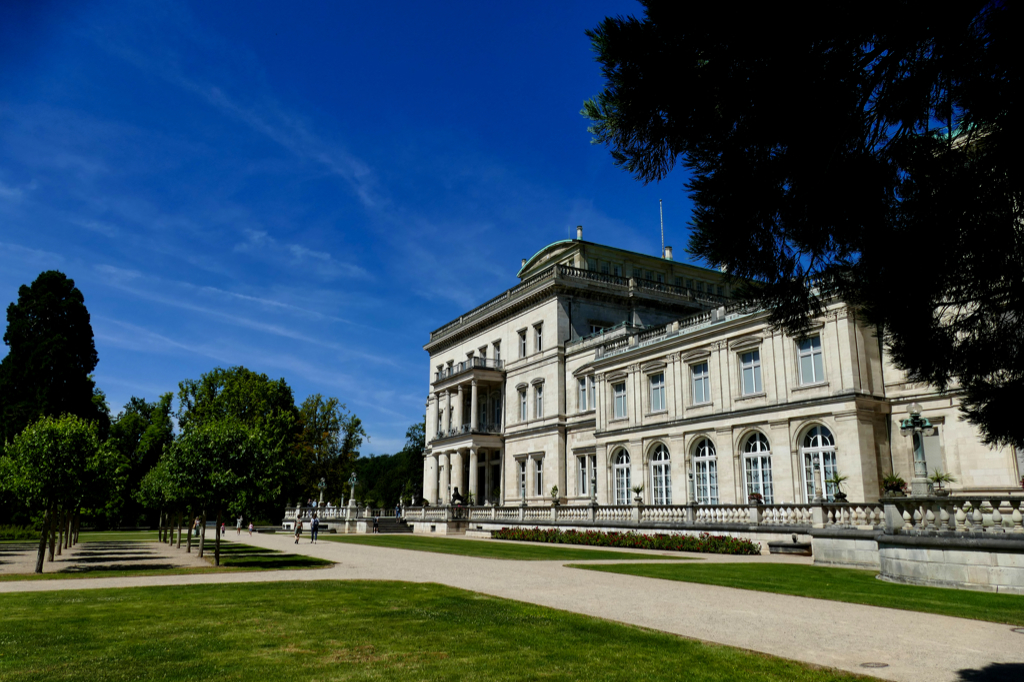
Obviously, the mansion stands in a prime location above the Ruhr Valley and Lake Baldeney in a 28-hectare park.
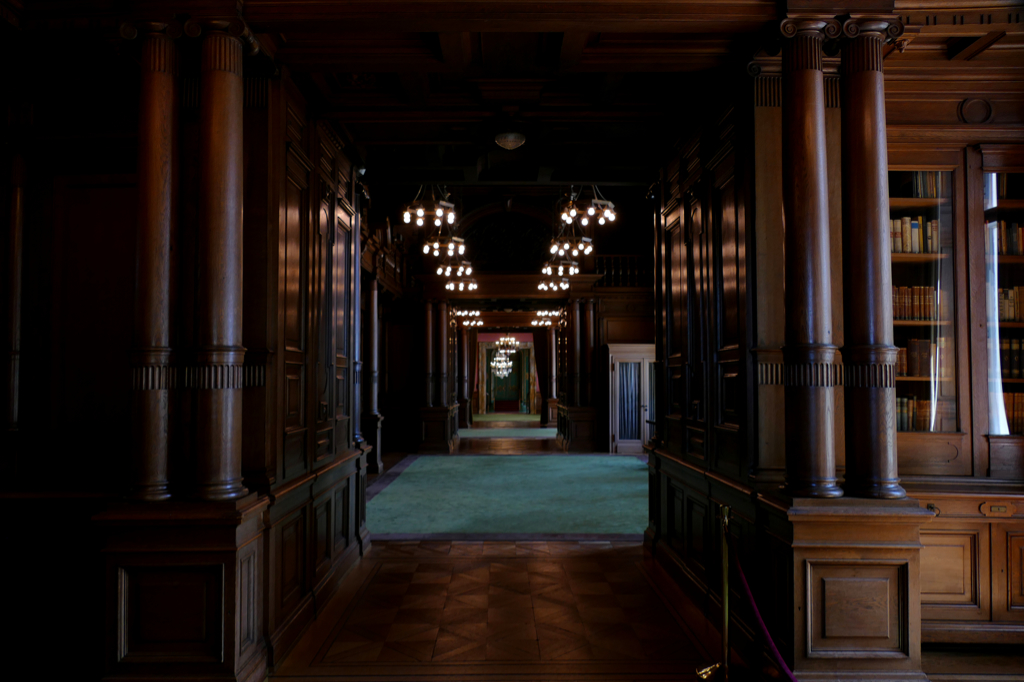
Today, the Alfried Krupp von Bohlen und Halbach Foundation owns the property. Major parts of the neoclassical mansion can be visited. A permanent exhibition in the so-called Little House informs you about the history of the Krupp family and the company, albeit in a quite palliative fashion.
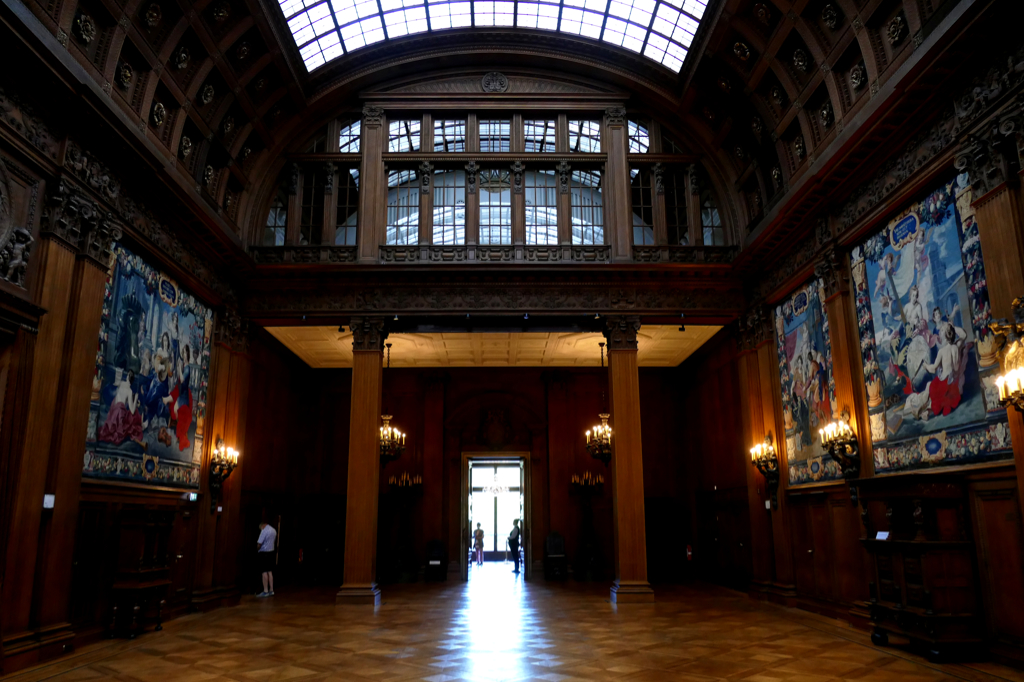
For a general entrance fee of 5 €uros, you can visit the villa from Tuesday to Sunday between 10 a. m. and 6 p. m. The park, however, opens already at 9.30 a. m. and closes only at 7 p. m.
The Other Man’s Grass City is Always Greener
When I heard that Essen was honored with the title Green Capital of Europe I found it hard to believe. The city used to be one of the most industrialized places in all of Europe, after all. Hence, I figured forbidding dreary places covered in dust and culm. Smog and pollution everywhere.
But no, the city of Essen takes urban development and mobility as well as climate protection and sustainability very seriously. Also, as soon as you leave the very city center around the train station, you realize how many parks and other large greeneries there actually are. So especially if you come to Essen in the summertime, you’re definitely in for a treat.
Grugapark
The nicest inner city park is the Grugapark. Actually, it’s a remnant of an important horticultural exhibition that took place in 1929. The following year it was opened to the public as a park. After the Grugapark hosted two further horticultural shows in the mid-20th century, it is now a beautiful recreational area with gardens, lawns, ponds, playgrounds, and sports facilities.
There are restaurants and kiosks, but you are free to bring your own picnic.
For a general entrance fee of 4 €uros, you can enjoy the wonderful facilities every day from 9 a. m. till 6 p. m., Sundays till 10 p. m. Students, groups, and families get discounts.
Sculpture Garden
In addition to its natural beauty, there are more than forty sculptures scattered around the Grugapark.
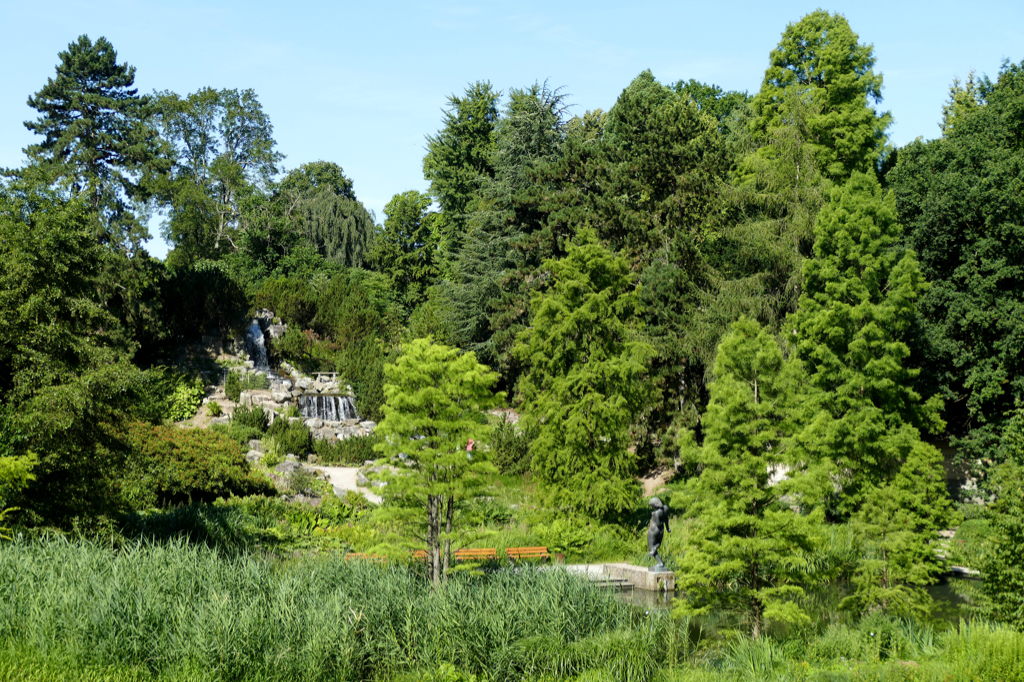
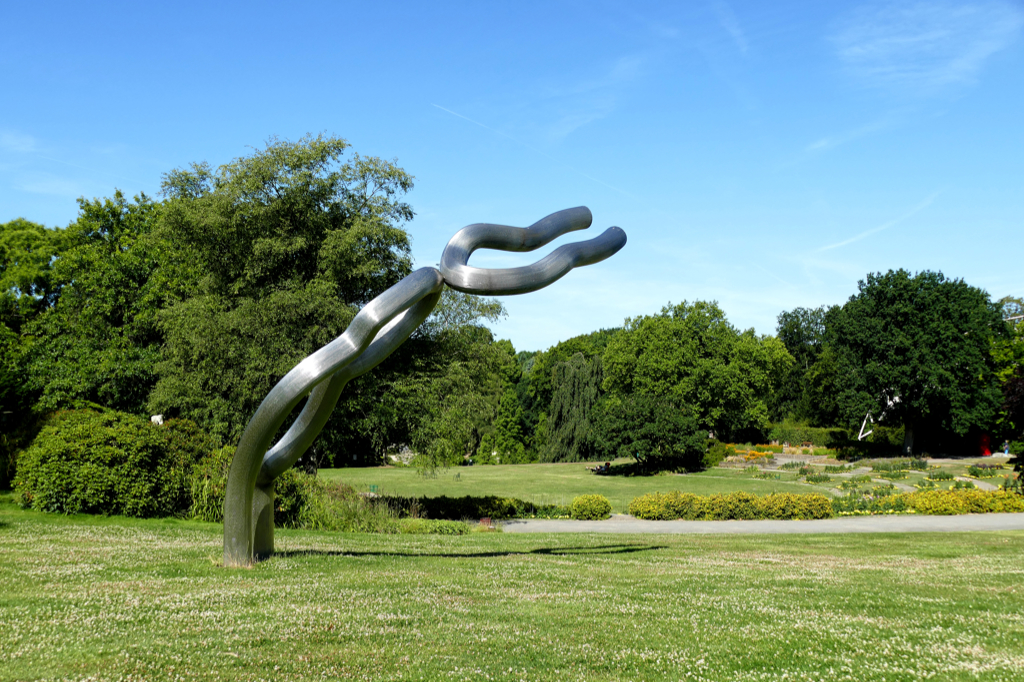
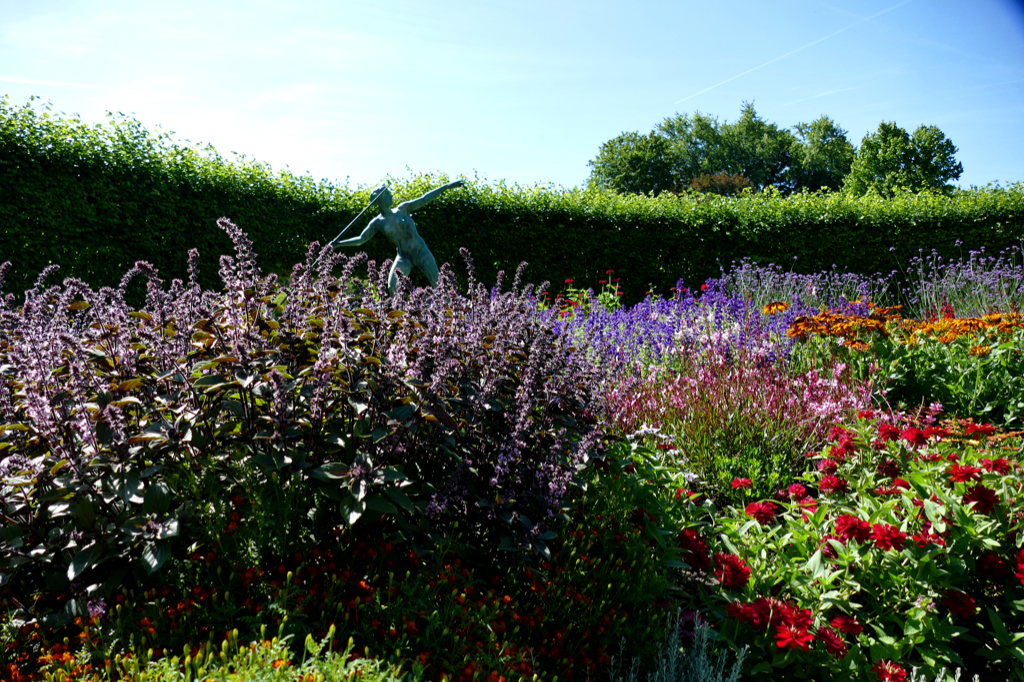
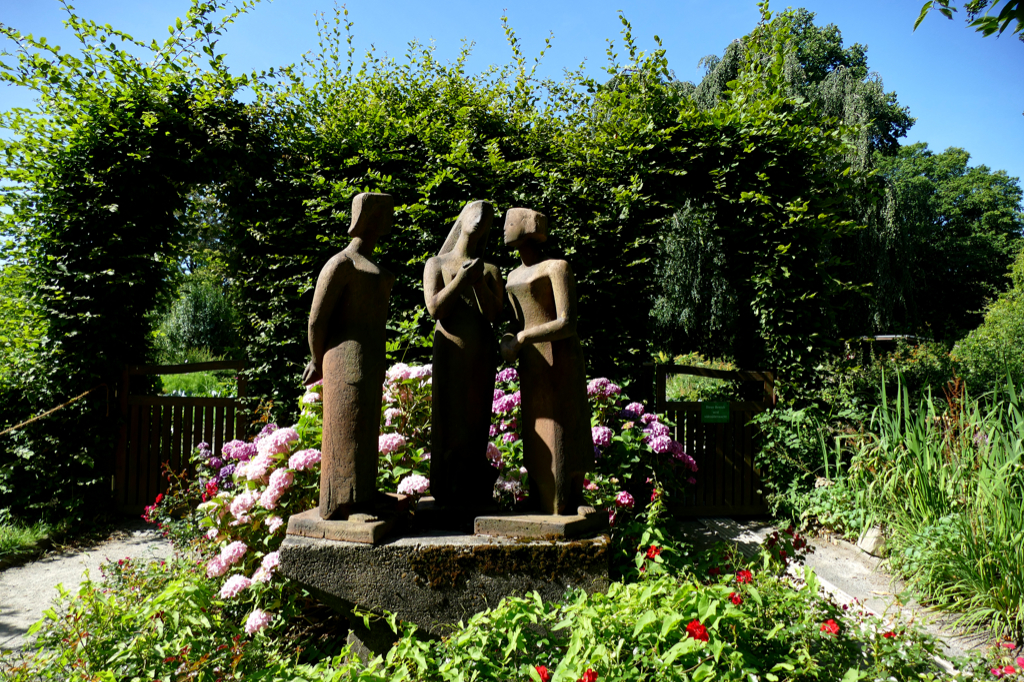
The first one was the Bronze Deer by F. P. Zimmer, a sculptor who later became an art professor in Atlanta. There, you’ll find a second cast of the work in the Atlanta Botanical Garden.
Friedensreich Hundertwasser House
In 1999, Austrian artist Friedensreich Hundertwasser created the first design for this family center for relatives of seriously ill children. It is one of 22 so-called Ronald McDonald Houses in Germany and stands on the northern border of the Grugapark.
Hundertwasser was born as Friedrich Stowasser in Vienna in 1928. His style was clearly influenced by the modernist architecture of Antoni Gaudí. In my post Antoni Gaudi in BARCELONA: A Guide to Modernism, I’ve introduced this intriguing style in detail. Nevertheless, the philosophy behind his work was strongly impacted by humanitarian and environmental ideals.

Hundertwasser inspected the site at the end of the 1990s and adapted his design to the lush surroundings. The highly creative and eco-minded artist proved that the construction of a building can be in total harmony with nature.
The ingenious complex was constructed after Hundertwasser’s death in 2000. It has eleven apartments and various communal rooms.
Baldeneysee
While the Grugapark is a wonderful place for a quick inner-city break, there is an even more pristine recreational area on Essen’s southern outskirts. Below the huge terrain surrounding the Villa Hügel lies Lake Baldeney. With a width of only 355 meters but a length of almost 8 kilometers, it is the largest of the six reservoirs in the Ruhr region.
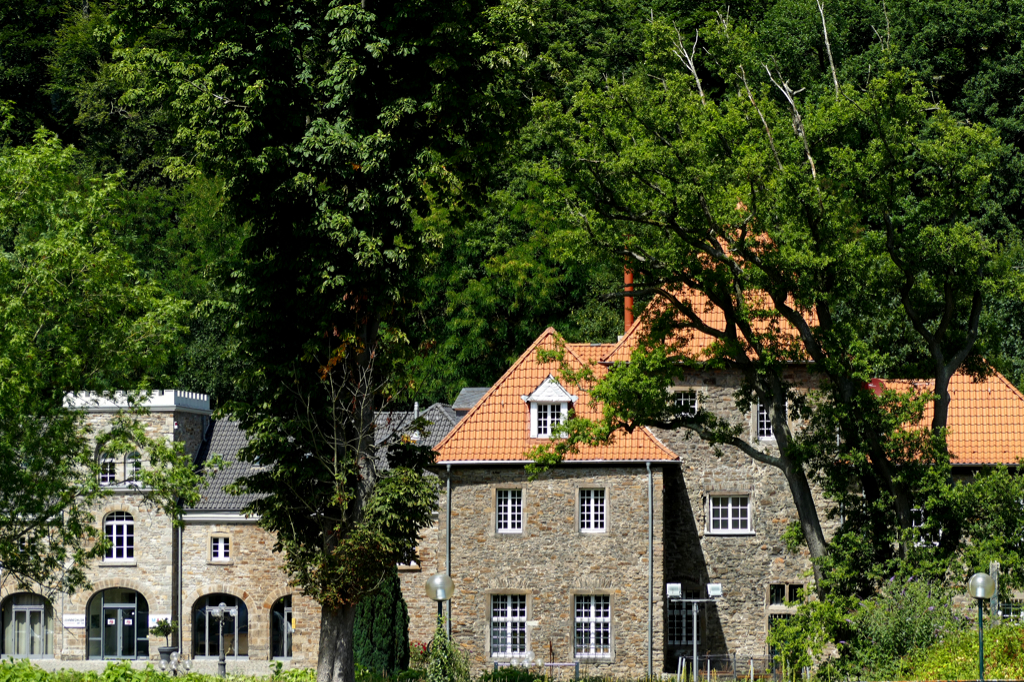
After having visited Essen’s attractions for one and a half days, I was exhausted and ready for some sweet leisure. A perfect way to get to know the lush area while sitting still is a cruise on an excursion boat. The boats of the company Weiße Flotte are going around the lake by the hour and a complete tour takes about two hours.
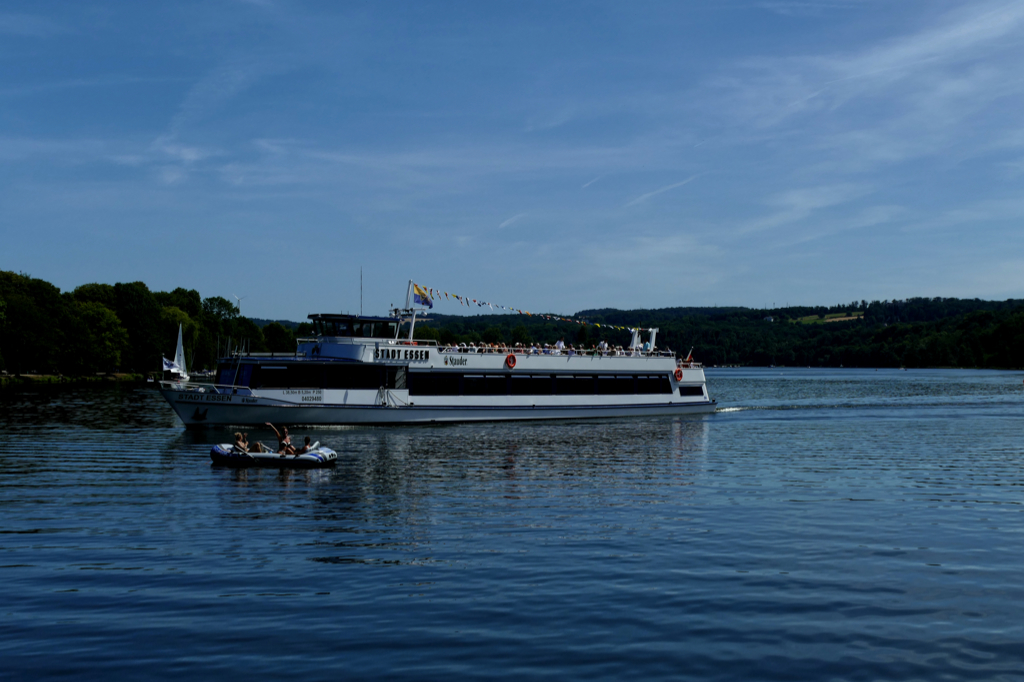
Since you can get on and off at many different piers around the lake, you can comfortably get to know the entire area. Obviously, you can also stay on the boat for the entire trip. Since you can buy hot and cold snacks and drinks on board, going during lunchtime is a great option to combine a good meal with an even better trip.
The company Weiße Flotte offers different trips like a breakfast cruise or a sunset cruise that both come with catering. The most popular cruise, however, is a trip around the lake which takes two hours and costs 15.50 €uros. If you want to include some stops along the way, the day pass for 19 €uros is your best option. The cruises leave during the week at 11 a. m., 1 p. m., 3 p. m., and 5 p. m. and on weekends from 11 a. m. by the hour until 5 p. m. To check out all the different options, go to their website. Also, if you book your ticket online, you save one €uro per trip.
Leisure’N’Pleasure
Due to the European quality standards for bathing water, bathing in Lake Baldeney was forbidden until 2017. But since the year Essen became a Green Capital, it is used also for swimming and various kinds of water sports.
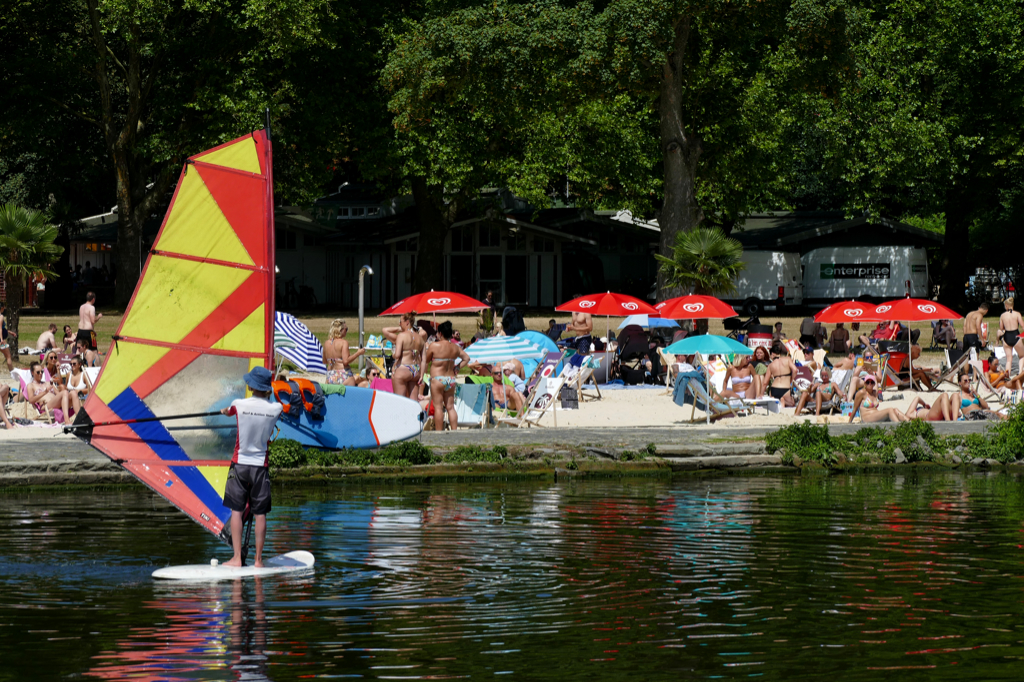
The best spot to enjoy a quick beach break is the so-called Seaside Beach Club on the northern shore. Apart from a palm tree-fringed sandy beach, you’ll find a lawn, beach volleyball fields, a surfing school, and a cocktail bar there. Also in 2017, the Baldeneysteig hiking trail was opened so that you can walk or cycle around the entire lake without getting your feet wet.
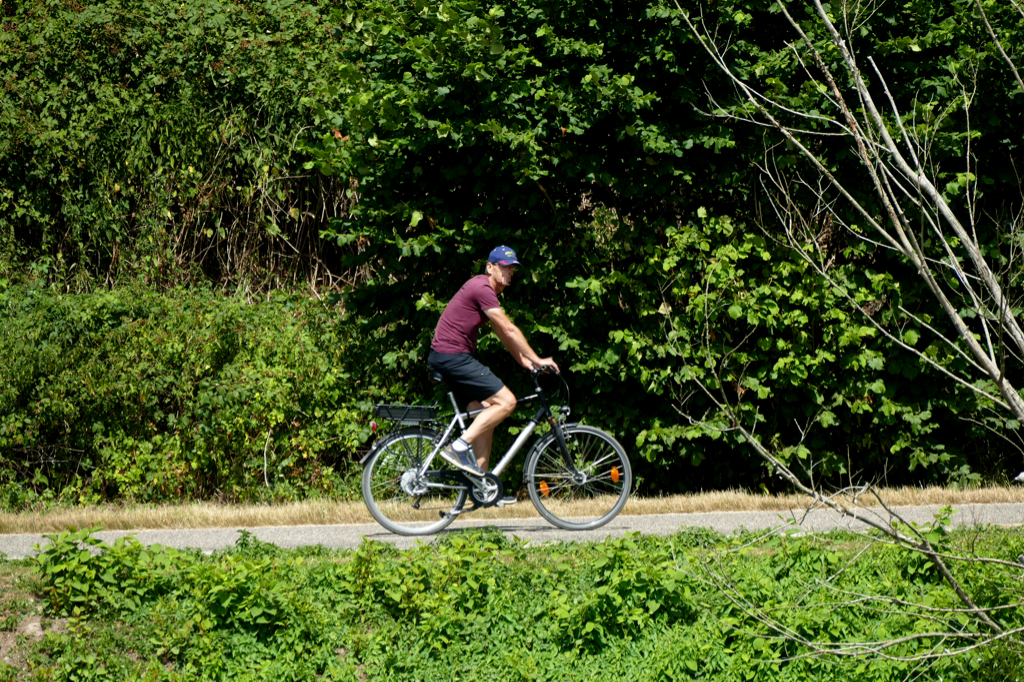
Although Lake Baldeney is in a tranquil area on Essen’s southern border, the regional train S7 takes you there from the main station in about ten minutes. Nonetheless, the train goes only every 20 minutes, during off-hours and on weekends only every half an hour.
Just like the Zeche Zollverein, Lake Baldeney will keep you entertained for an entire day. You should keep that in mind when planning a visit.
Industrial Heritage Trail
The Industrial Heritage Trail, in German Route der Industriekultur, is a project of the Regional Association Ruhr and connects the most important and touristically most attractive industrial monuments in the area.
Despite the name Route der Industriekultur, it is not a single route, but a network that connects museums, exhibitions, panoramic viewpoints, and historically significant settlements. The individual places represent the industrial developments of the past centuries in the Ruhr area. This is probably the world’s most extensive tourist network for the development of the industrial cultural heritage. There is a separate network of tracks for cyclists.
An approximately 400 km long holiday route is signposted, which includes all attractions. The network includes a total of around 700 km of cycle paths as part of the Route of Industrial Culture by Bike.
Essen contributed to the project with the Villa Hügel and the Zeche Zollverein, obviously. In addition to those two landmarks that I’m introducing above, the so-called Schurenbachhalde as well as the workers’ settlements Altenhof II and Margarethenhöhe are part of the heritage trail, too.
This project has a very informative website, unfortunately, it’s only in German. However, their print material like brochures, maps, and the like are available also in English. You can either order them or print them out for free.
Practical Information
How To Get There
Flight
The city of Essen doesn’t have a commercial airport. The closest one is in Düsseldorf, less than 30 kilometers southwest of the city center. It can be easily reached by public transport, for instance, by the regional train S1 from Essen’s main train station.
Train
Because of its location in the middle of Germany – and in all of Europe, for that matter, you can get to Essen quickly and easily by train, too. Train connections to many cities in Germany as well as in neighboring countries such as the Netherland, Belgium, and France are frequent. You can check timetables and prices on the website of the Deutsche Bahn, Germany’s national rail company. It’s available in eight languages.
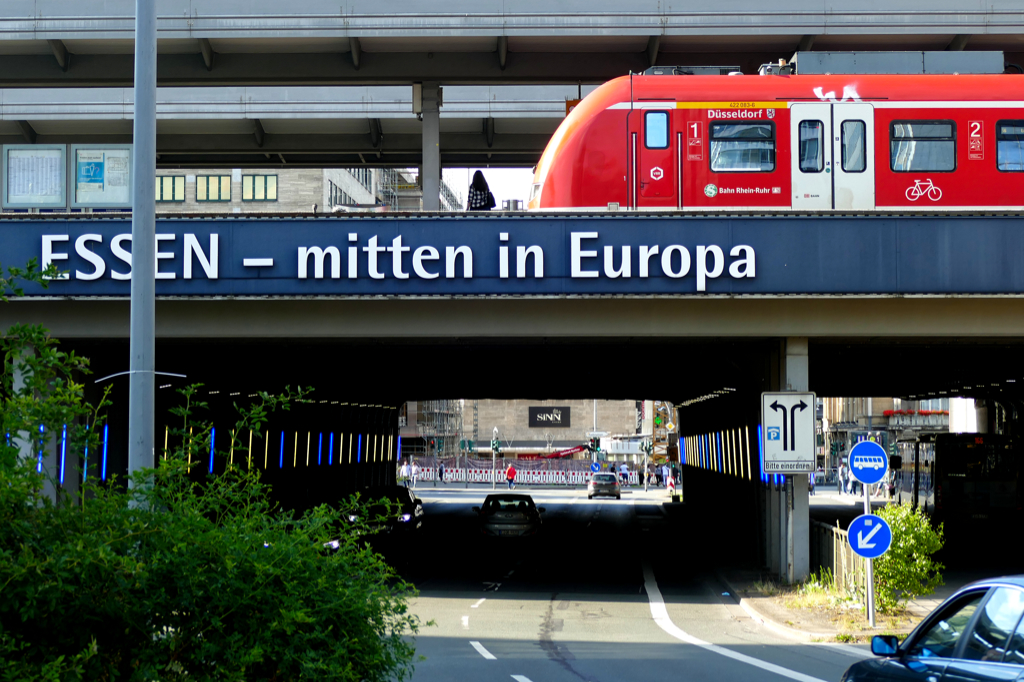
Essen lies in the Federal State of North-Rhine Westphalia. If you’d like to explore other places around the area, the so-called SchönerTagTicket is a great deal. It translates to beautiful day ticket, and you’ll certainly have a great day of unlimited travel for only 30,30 €uros. Nevertheless, the only catch is that you are only allowed to take the regional trains. Those train numbers begin with RE, MET, etc. However, you cannot take the interregional trains such as the Eurocity EC, Intercity IC, or Intercity-Express ICE.
If you are a party of at least two people, there is a version called SchönerTagTicket 5 Personen which costs 45,20 €uros and is good for up to five people. I think that’s pretty amazing. Alternatively, a parent or grandparent can be accompanied by an unlimited number of their own kids or grandkids under the age of 15.
Bus
Flixbus is conquering the world – at least the world’s European part, hence it’s also serving Essen. It might not be the fastest way to travel, but it’s quite comfortable and definitely the cheapest. For instance, a one-way trip from Munich sets you back around 30 €uros, but it takes about 12 hours. International tickets from for instance Amsterdam or Brussels are around 20 €uros and the trips take only 3 to 4 hours.
From some German cities like for instance Hamburg and Berlin, Flixbus also offers a very cheap train connection. The Flixtrain takes you from Hamburg to Essen in 3 short hours for under 10 €uros and from Berlin in 5 hours for under 20 €uros. However, while the bus rides are okay, the trains tend to be quite unreliable.
The Flixbus stop in Essen is on Freiheit 5a, on the southern side of the main train station.
To check schedules and prices, visit their website.
How to Get Around
Public Transport
Like in every German city, local public transport in Essen is comprehensive and reliable. There are buses, trams, subways, and local as well as regional trains. The only flaw is that some lines are not that frequent, hence, better check the respective timetable. You can easily do so for instance on Google maps.
In general, one trip within the city limits costs 3 €uros. Short distance trips that included three consecutive stops in total cost only 1.80 €uros. Kids between 6 and 14 years of age pay 1.70 €uros. Under 6, they travel for free.
There are also 4-journey tickets, day tickets, group tickets, and much more. You can check out your best option on this website.
Nevertheless, keep in mind that tickets are only valid if they have been stamped before departure. Even if you have a ticket, if it’s not validated, you might be fined.
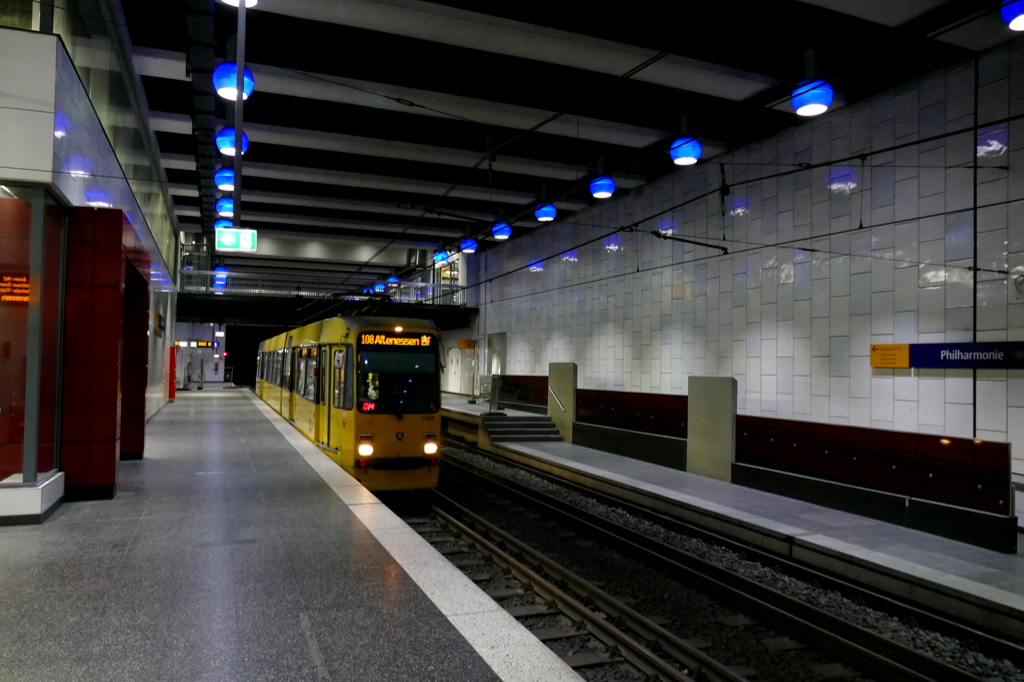
The orange validator machines are located at the tram, subway, and train stations as well as on buses. Once stamped, the ticket remains valid for a certain period of time, between 20 minutes and 4 hours, depending on the type of ticket you purchased. Except for short trips, you can change means of transportation as you like as long as you travel in the same direction. Hence, there are no round and return trips – except with day tickets, obviously.
Cycling
Another convenient way to explore Essen is by bicycle. I wonder if there is a city in Europe that does not offer rental bikes. In Essen, Metropolrad Ruhr launched Germany’s largest bicycle rental system in 2010. You find their website here.
Registration is free. To verify your means of payment, you pay a starting credit of 1 €uro which can then be used for your fees. After debiting via credit card or PayPal, your account will be activated. For a monthly fee of 10 €uros, you get 30 minutes per rental free. Since Essen is not that big and you can leave your rental bike at many different stations around town, you probably won’t pay more than your monthly fee.
However, if you do not want to pay a monthly fee, the rate is 1 €uro for 15 minutes. Therefore, I presume that even if you’ll explore Essen cycling for only one day, paying the monthly fee is far better.
Deals And Discounts
While there isn’t a specific tourist pass for Essen, there are two passes covering the entire Ruhr region including for instance also Dortmund, Düsseldorf, and Duisburg – and many other cities that do not start with the letter D.
The first one is the WelcomeCard Ruhr. You can buy it in 24, 48, and 72 hours versions. Apart from visiting attractions in the Ruhr area free of charge or at half price, you can also use all means of public transport that are within the regional VRR network. Don’t worry, you’ll find a map on their website.
This pass costs 39,90 €uros for 24 hours, 69,90 €uros for 48 hours, and 89,90 €uros for 72 hours. There is no further discount for groups or children which makes it quite pricey. Also, during the 9 €uro-deal that I’m introducing above, the public transport option is basically irrelevant since you can spend an entire month riding trains’n’trams for as little as 9 €uros.
Therefore, if you spend more than one day in the area, the RUHR.TOPCARD might be a far better option. When it comes to attractions, it covers more or less the same landmarks as the WelcomeCard Ruhr, but public transport is not included. The RUHR.TOPCARD costs 58 €uros and you can obtain a kids’ card for only 38 €uros for children that are born between 2008 and 2017. Up to three children accompany their parents for free if they are born after 2017.
However, the RUHR.TOPCARD is actually valid for an entire year starting January 1st. While 90 attractions can be visited free of charge, an additional 50 places offer access at half price.
Visiting Organized
I’m an avid solo-travelling woman. Since solo travel doesn’t equal solitude, I love to join organized tours here and there. They allow me to meet fellow travellers – for just a short moment or a lifelong friendship.
Therefore, here are some great ideas of what to do during your stay in Essen. Especially if you have only a short amount of time, they’ll enable you to leave the planning and organizing to others and just enjoy the city and the surrounding area to the max*:
Where to Stay
Over the past years, a couple of new hotel chains have opened branches in different larger cities in Germany. They offer comfort in trendy, artsy rooms at a reasonable price. They try to be as eco-friendly as possible which is also reflected in very healthy breakfast choices.
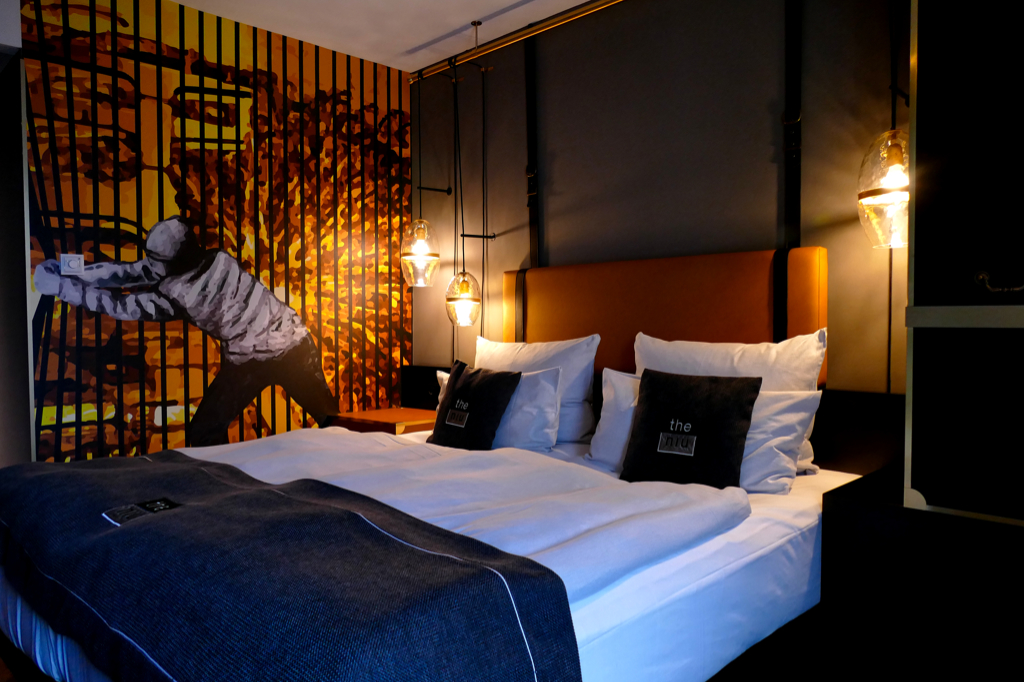
One of these innovative lodging options are the Niu hotels. The mix of art’n’style, fun’n’facilities, sustainability, and an incredible breakfast buffet made the Niu Cobbles* the perfect place to stay during my weekend in Essen.
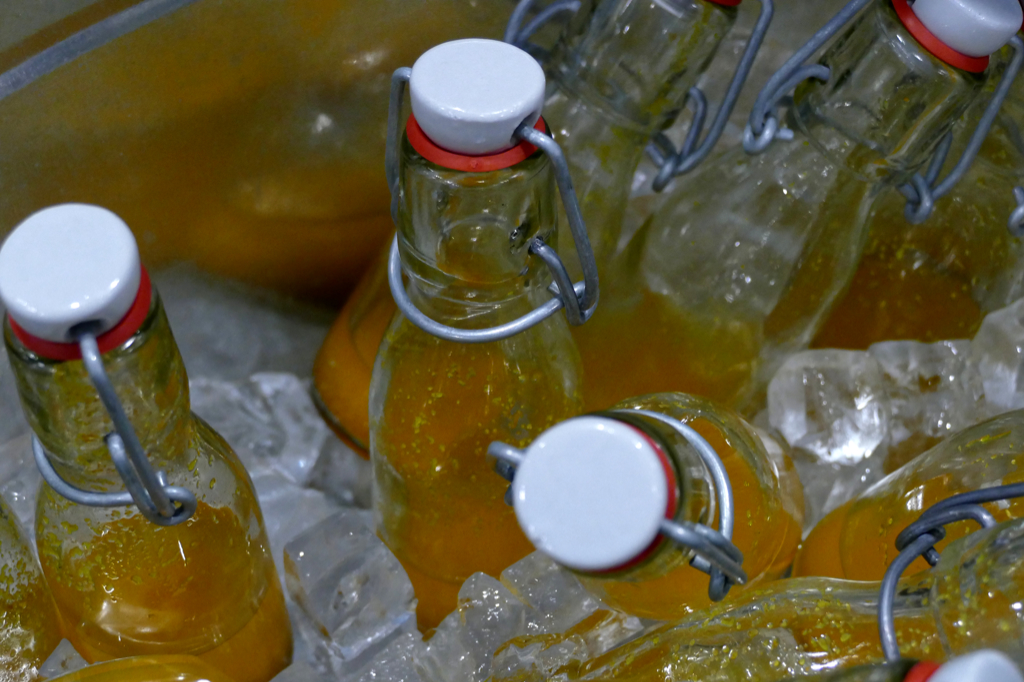
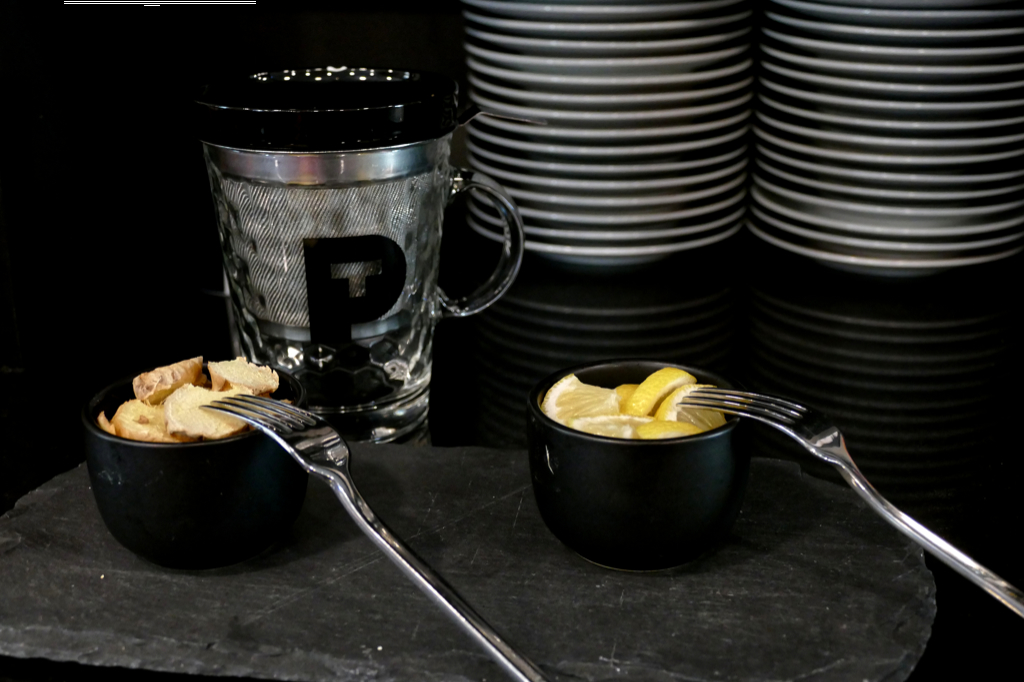
Located conveniently within walking distance between the main station and the hip neighborhood of Rüttenscheid, it’s the perfect lodging option also for a longer stay.
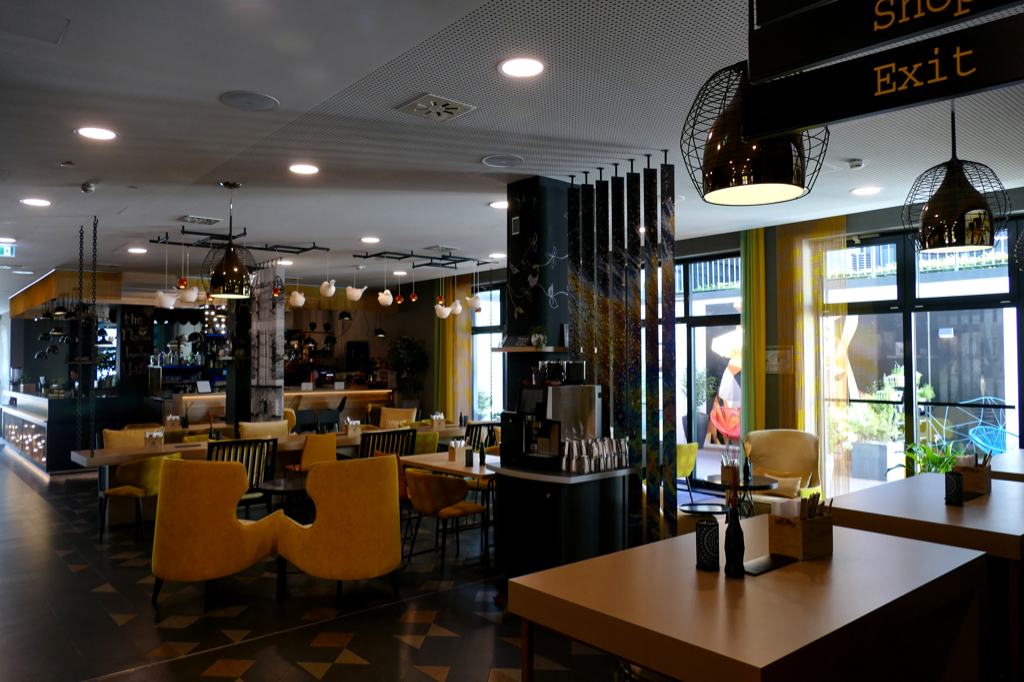
However, if they should be booked out, you’ll find some suitable alternatives in this map*:
Booking.comWhat to Eat
Despite the meaning of its name, Essen – which translates to food in German – is not exactly famous for its outstanding cuisine. The most popular dish is currywurst – a sausage, cut in chunks and smothered in tomato sauce and spiced with lots of curry powder – with a side of fries.
But like any other city with a high percentage of migrant population, you probably won’t find a cuisine that’s not represented in Essen.
Turkish and Arabic restaurants are lining the Viehofer Straße in the northern part of the city center. However, there are also restaurants from southern and south-eastern Europe as well as basically every Asian country.
Cash And Cards
Until now, 20 European countries replaced their former local currency with the €uro starting in 2002. Obviously, Germany is one of them. The exchange rate is 1 US$ = 0.94 EUR as of January 2023. However, you can check today’s conversion rate on this page.
Especially since the pandemic, cards are far more accepted than before.
Communication And Connection
Since June 2017, no roaming charges apply within the EU if you have a European mobile phone contract. This involves all 27 countries of the European Union as well as Iceland, Liechtenstein, and Norway.
The EU roaming regulation applies to all contracts.
In case European roaming is not available, you can connect to the internet at museums, eateries or cafés, and, of course, hotels. This being said, in comparison to many other lands, Germany is a developing country when it comes to the internet. There are annoyingly many dead zones and many places do not offer free Wifi connection.
So if you depend on a reliable online connection, you should opt for a SIM card. Whether phone companies such as O2 or Vodaphone or supermarkets like Lidl and Aldi – there is a wide choice of providers of prepaid cards.
The standard voltage in Europe is 220 V and the frequency is 50 Hz. In Germany, they use the plug types C and F.
Whereby, nowadays, all these chargers have integrated adapters, in general, the voltage and frequency don’t really matter.
By the way, you’ll find comprehensive travel info in my post World’s Most Complete Travel Information – an indispensable globetrotter-classic.
Say It Right
In Germany, most people speak pretty decent English. Nevertheless, for some useful words and phrases, you might want to practice a little with the help of e. g. Babbel. Also, the first lesson is free and already supplies you with a useful basic vocabulary.
In this post, I’m writing out some of the German names of brands and places. Obviously, you will notice that there are letters that might not exist in other languages.
Firstly, the letter ß exists only in the German alphabet. It’s by no means a B – it’s a so-called sharp S. You pronounce it like the double S in kiss. So although the German word for street, Straße, looks quite exotic, it is simply pronounced Shtrasse. Mind you, when an S stands before a T, it becomes sh instead of s.
Then, there are three more vowels, ä being the easiest one since it’s pronounced like an open e as in head.
For some foreigners, ö and ü might be a bit tougher. Ö is pronounced more or less like the e in her. Finally, Ü sounds a bit like the u in huge.
Map
On this map, you can see the exact location of all those amazing places that I’m introducing in this post. Clicking on the slider symbol at the top left or the full-screen icon at the top right will display the whole map including the legend.
Pinnable Pictures
If you choose to pin this post for later, please use one of these pictures:
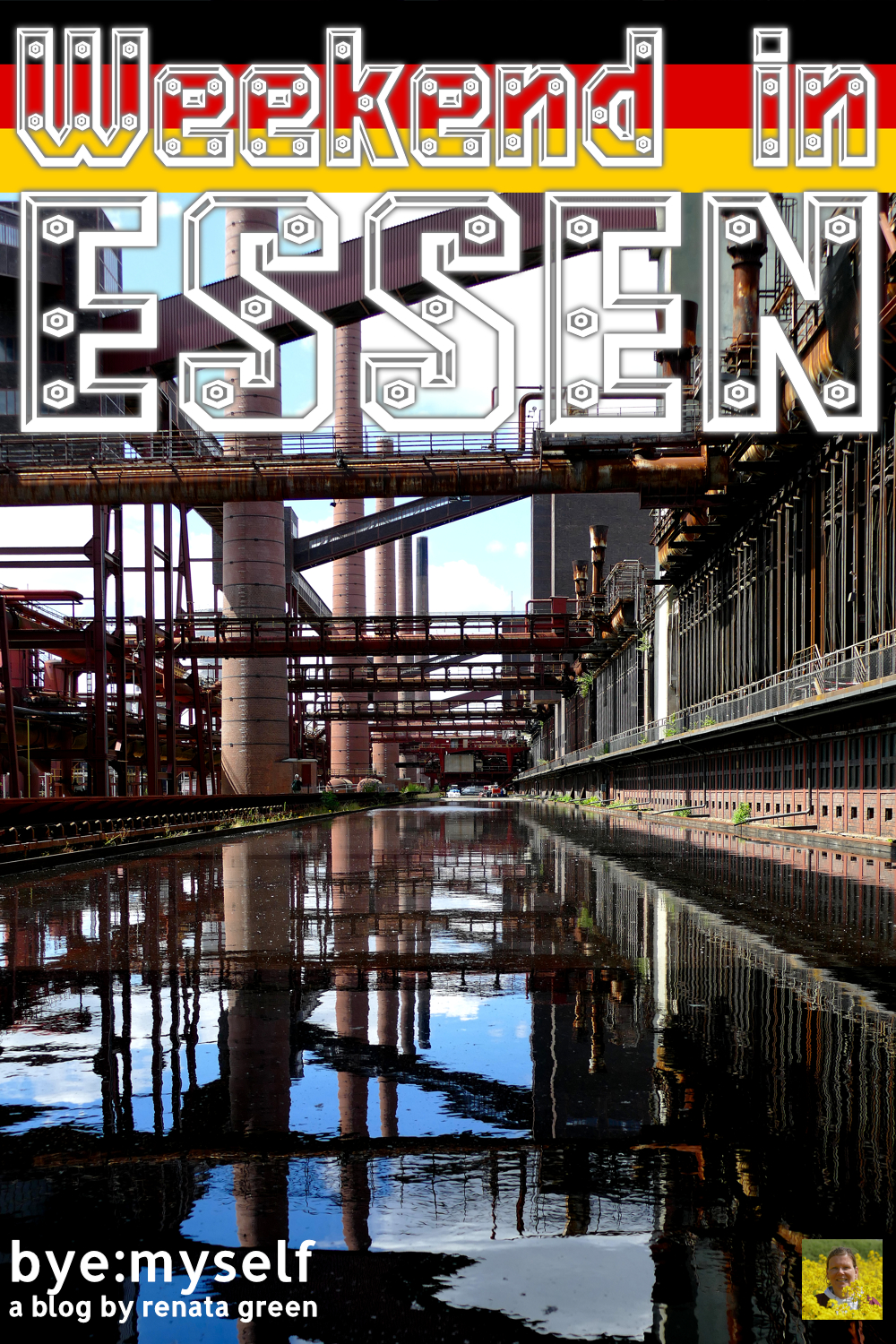
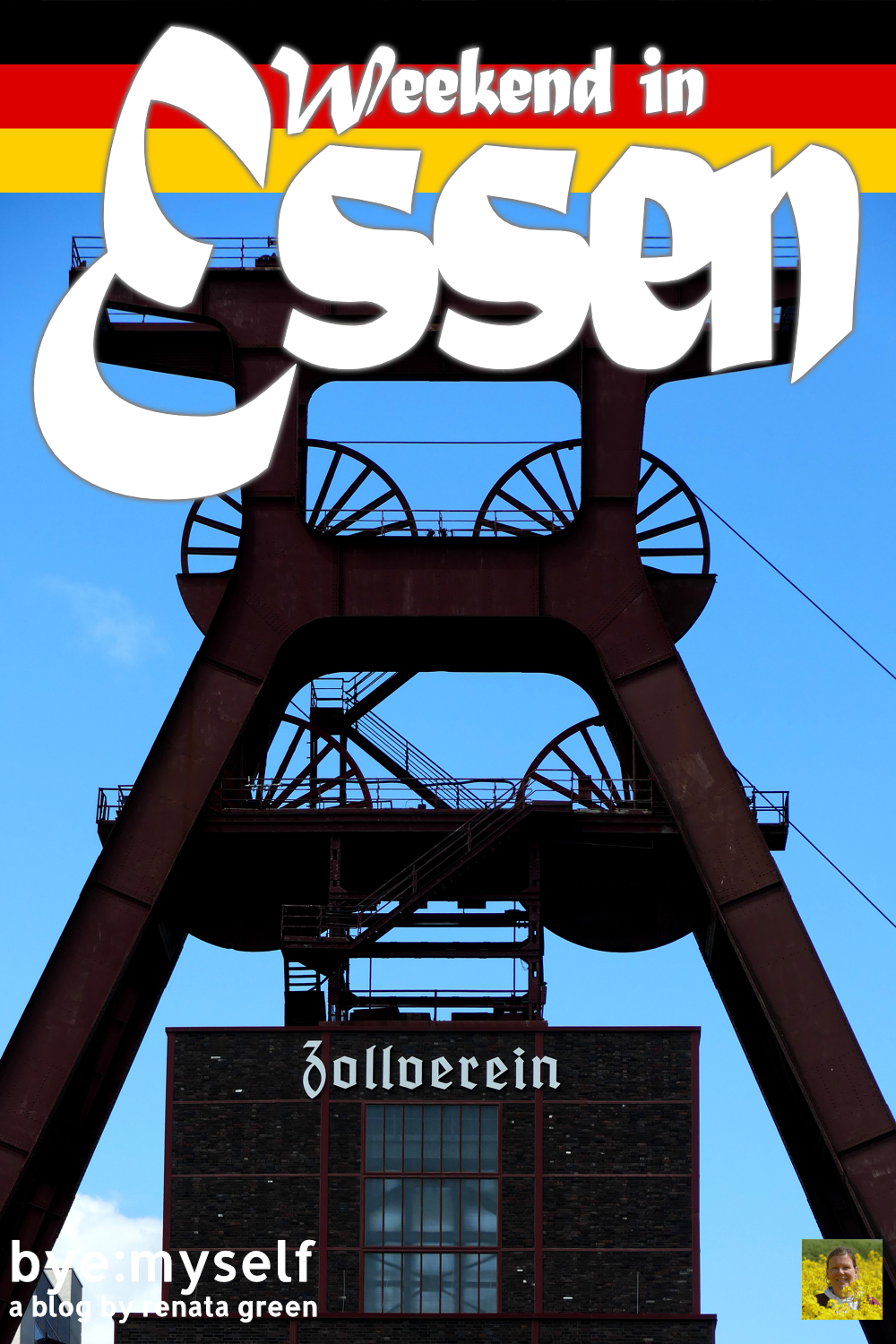


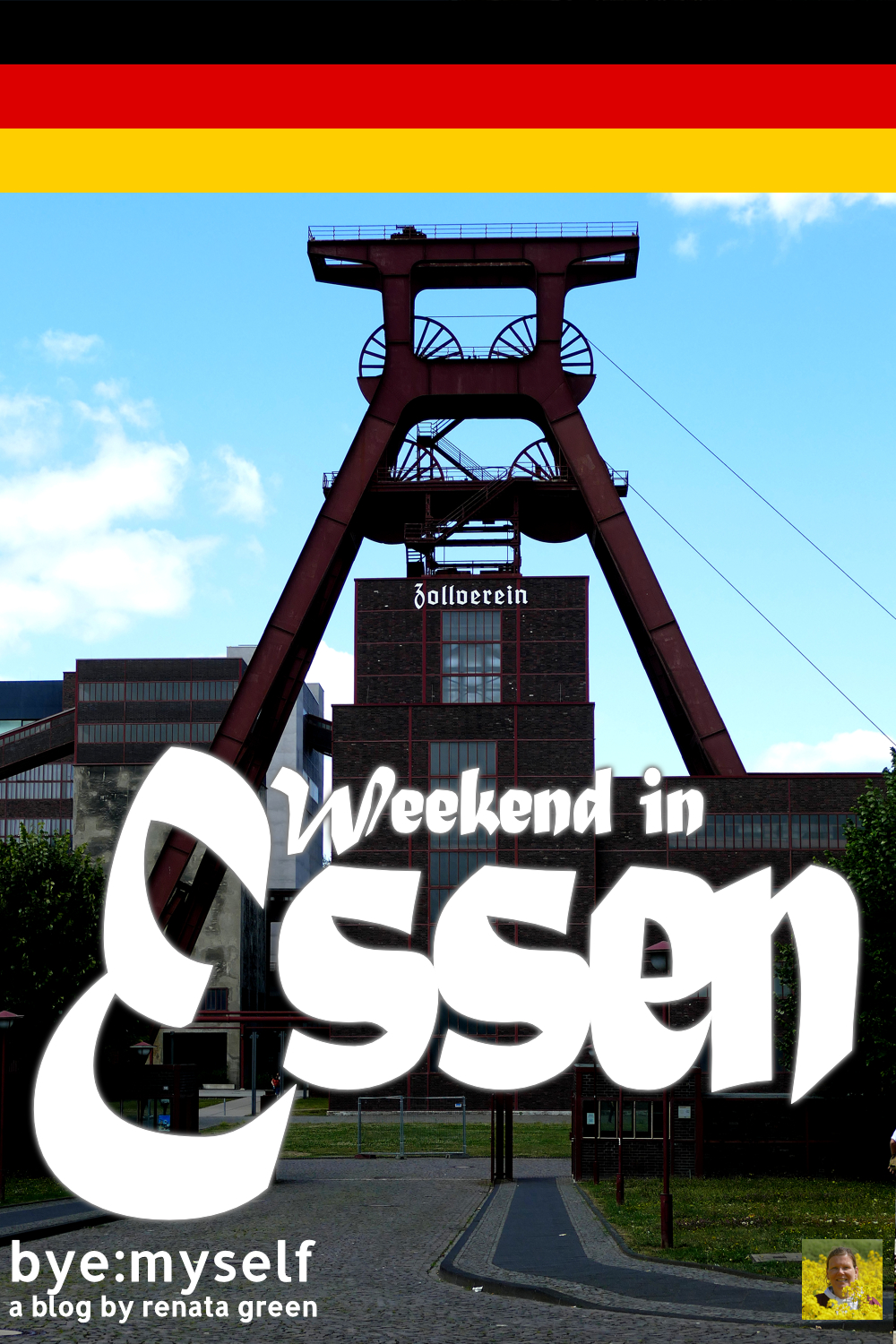
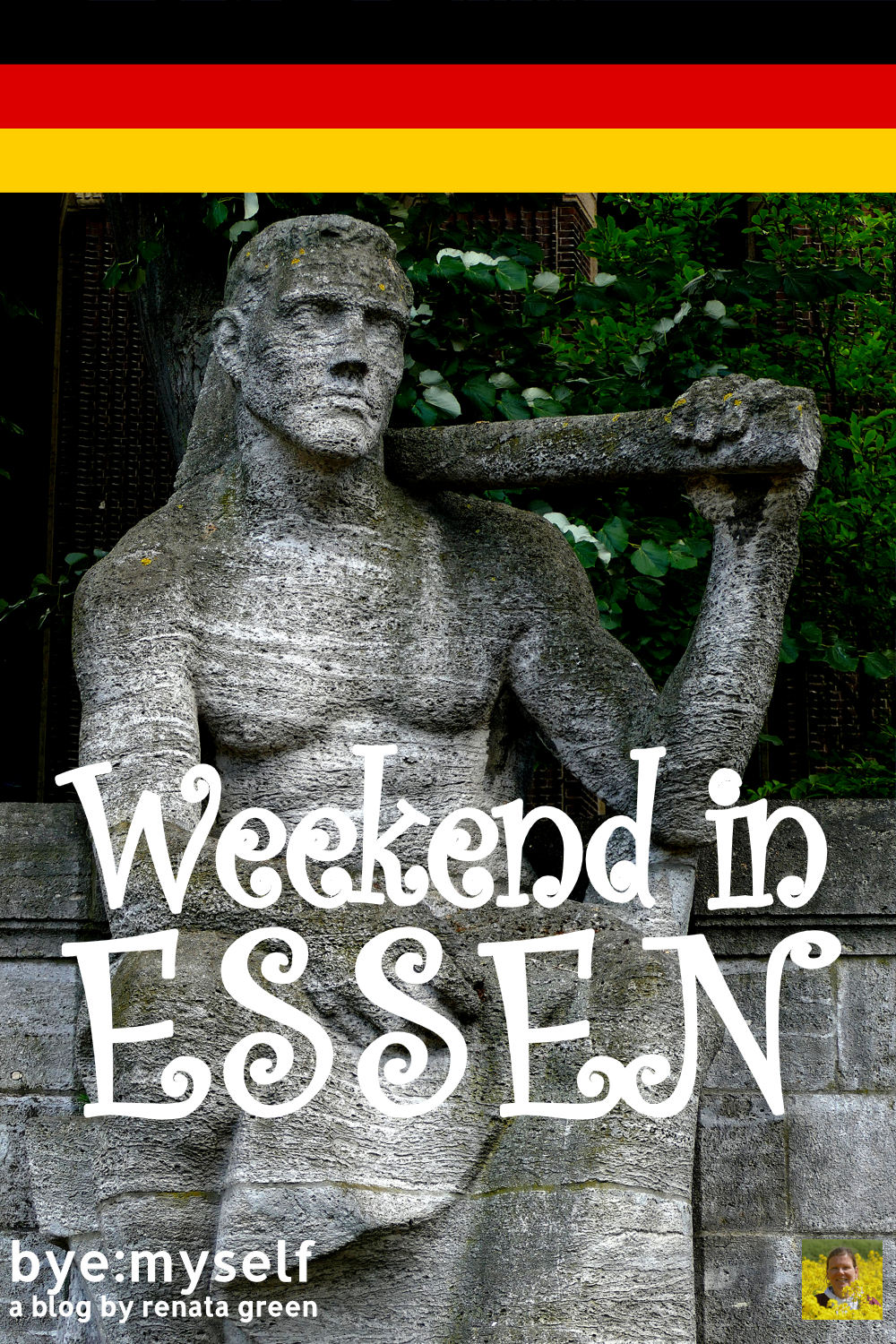
Note: I’m completing, editing, and updating this post regularly – last in January 2023.
Did You Enjoy This Post? Then You Might Like Also These:
BERLIN guide: get the most for less on bus 100
LUBECK – a guide to Germany’s most ravishing city
Guide to POTSDAM – how Frederick made a small town great
FRIEDRICHSTADT – A Little Piece of Holland in Northern Germany
From North German Ports to the Americas: Migration in the 19th and 20th Century
CUXHAVEN – walking on water
The Island of BORKUM – West of East Frisia
24 hours in DUSSELDORF

Disclaimer:
This article contains affiliate links. By purchasing items or making a reservation through those links on my site, not only do you get the best rate. I will receive a small commission that helps to run this site. The EMG – Essen Marketing GmbH supported my blogger trip by supplying me with accommodation, information, and some free tickets.
However, all opinions on these services are mine and weren’t by any means influenced by my cooperation partner.
